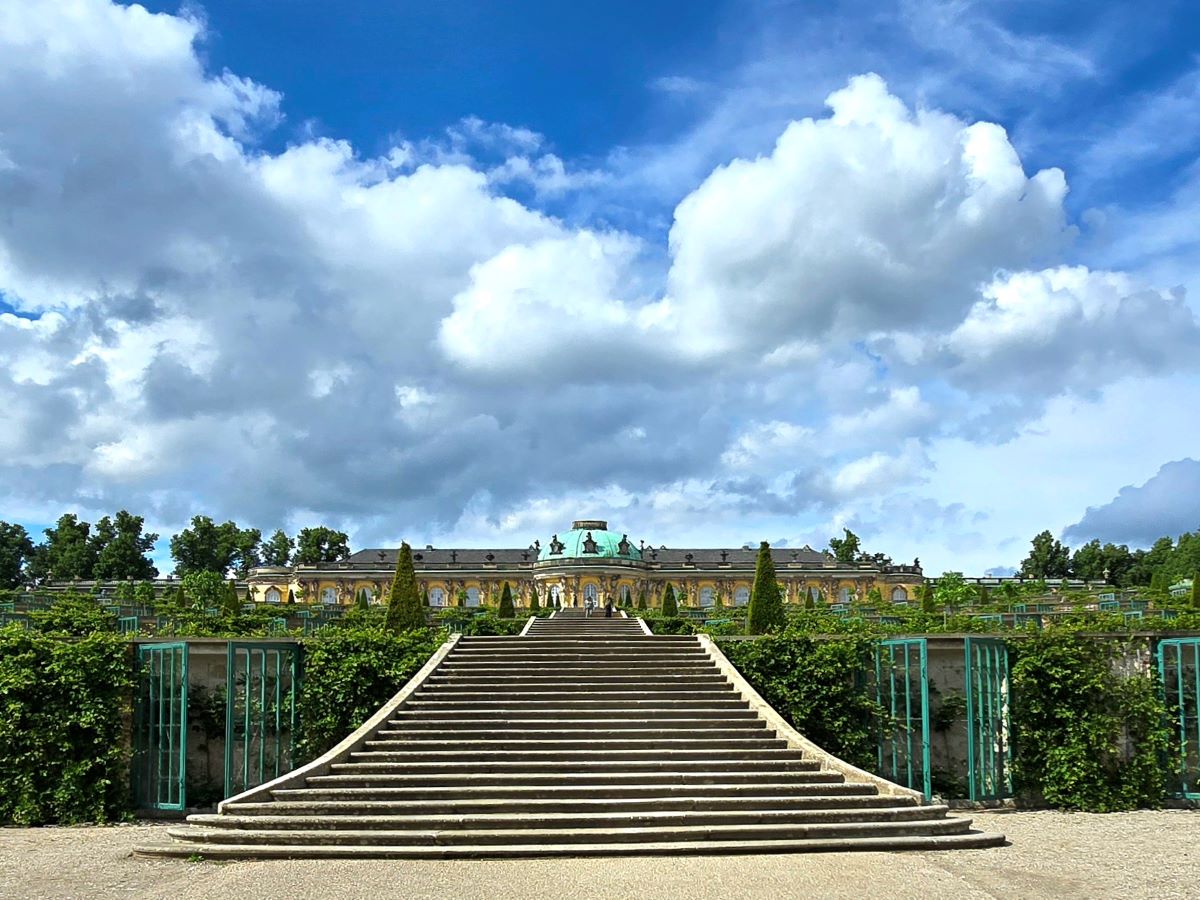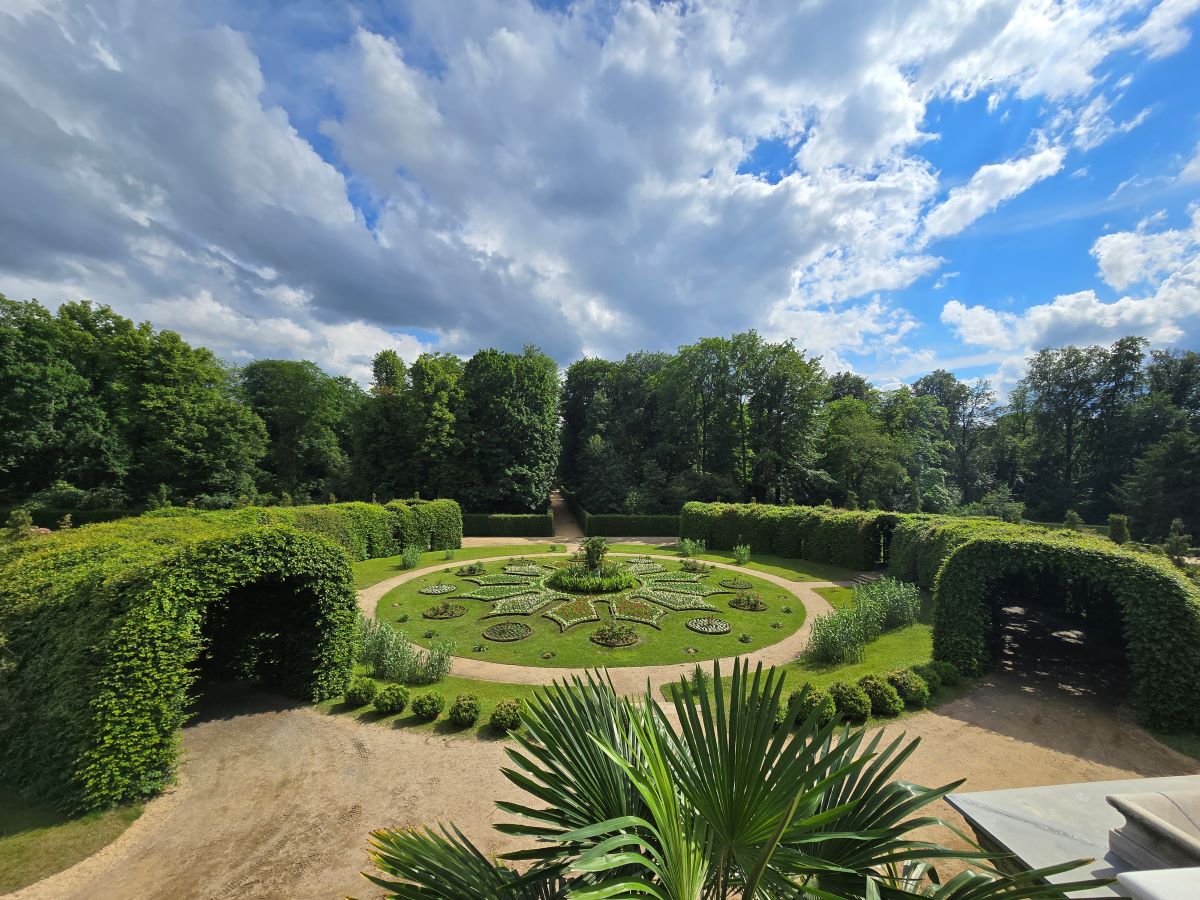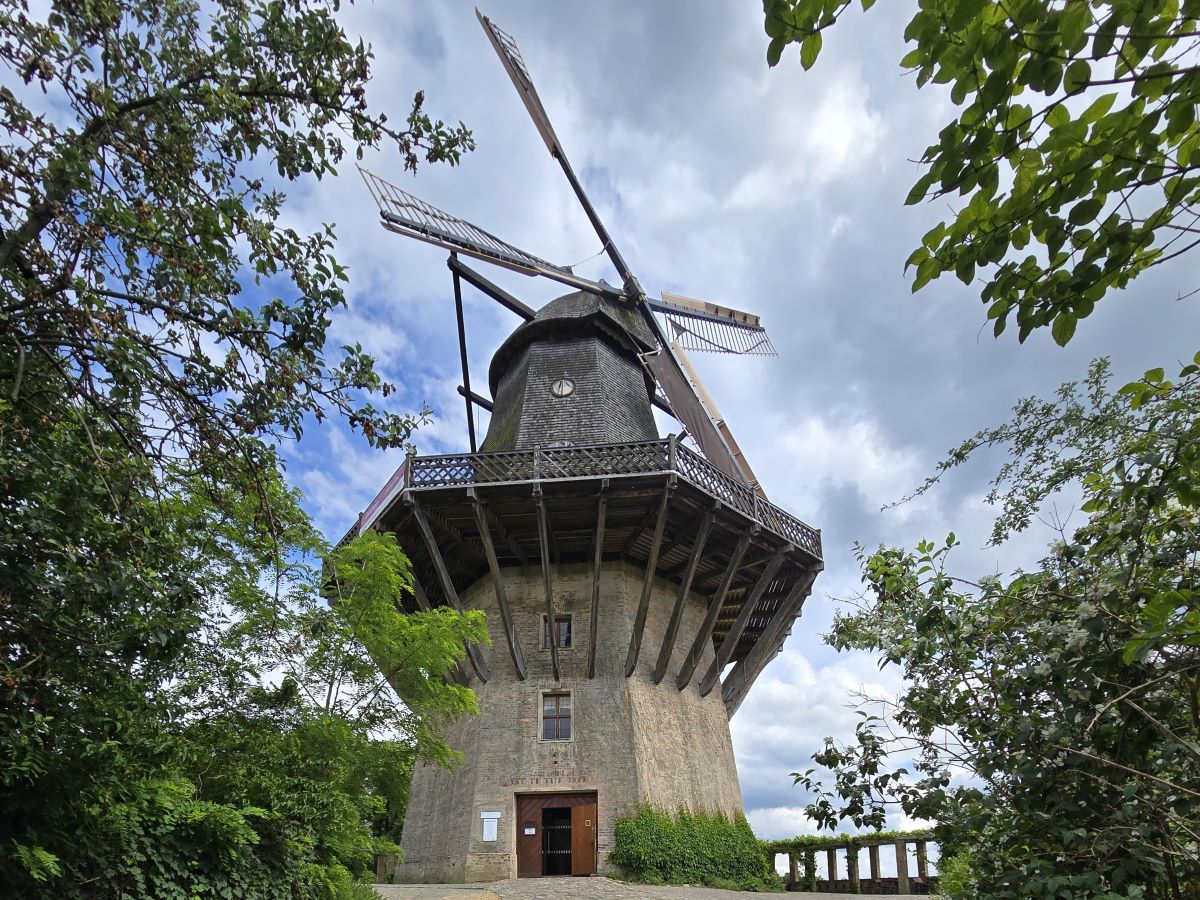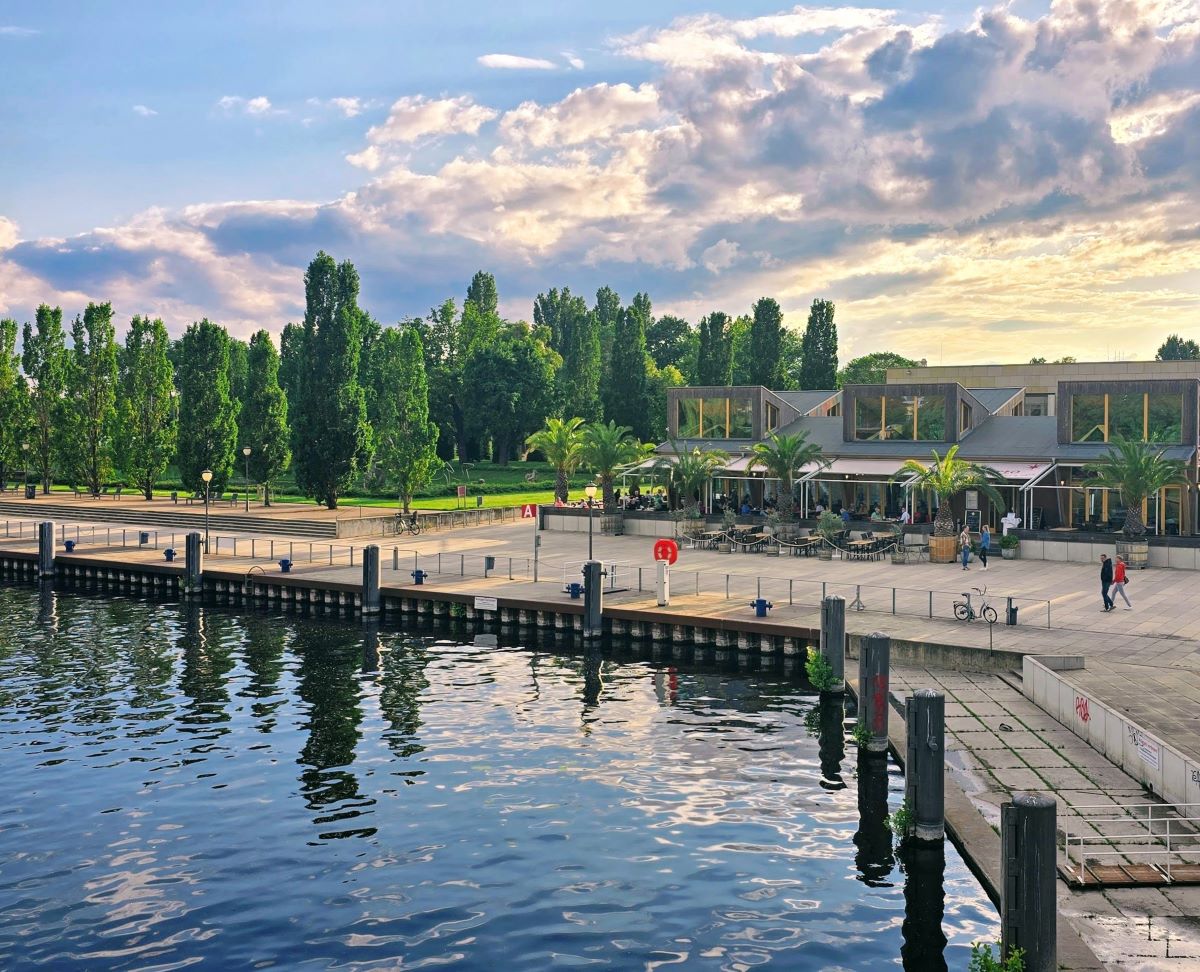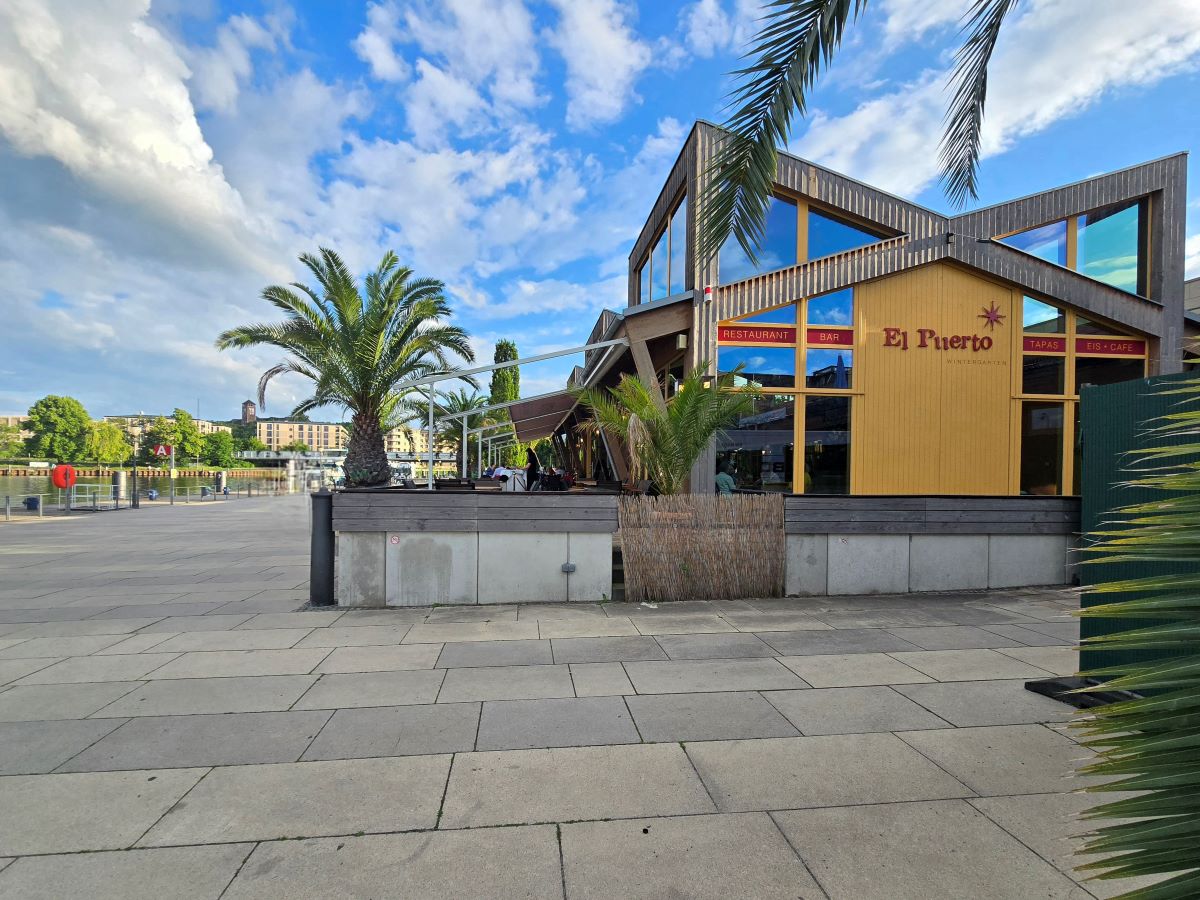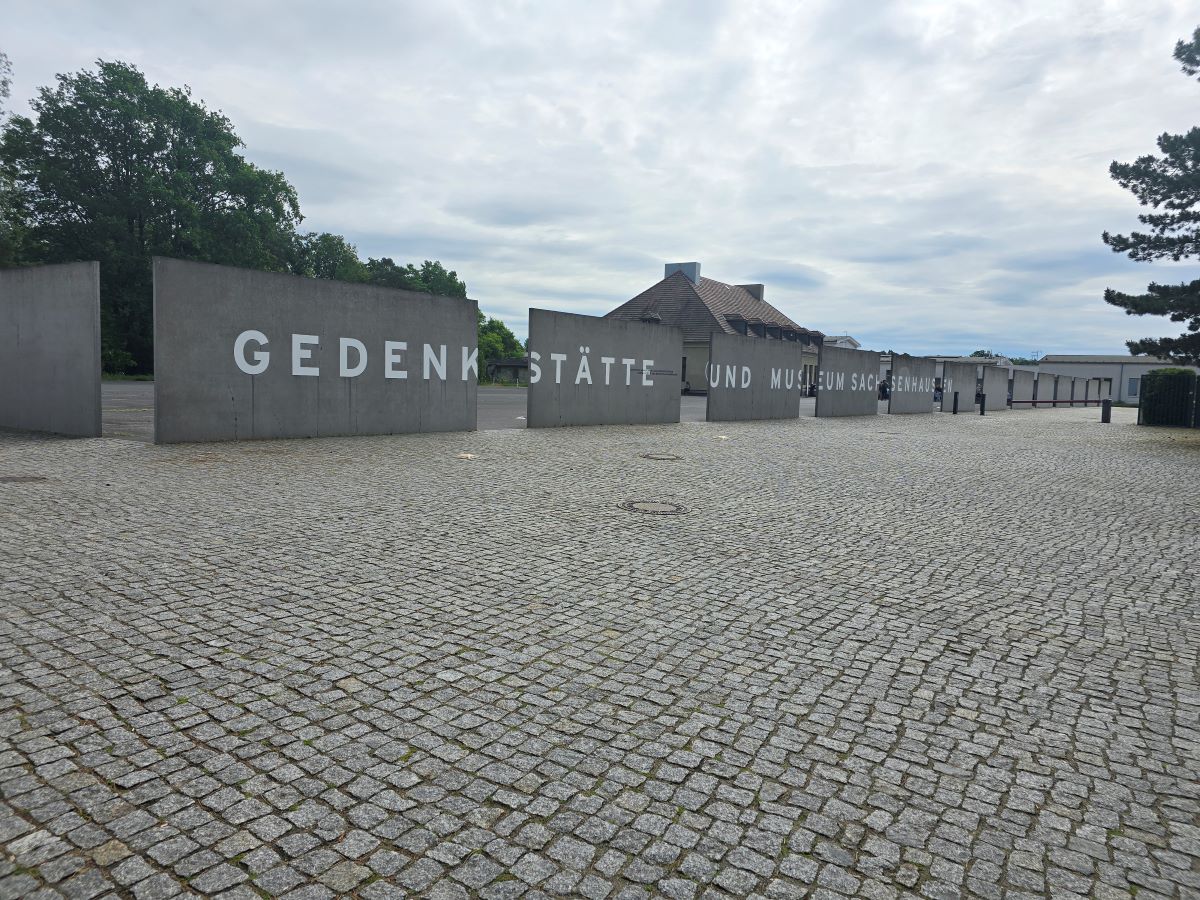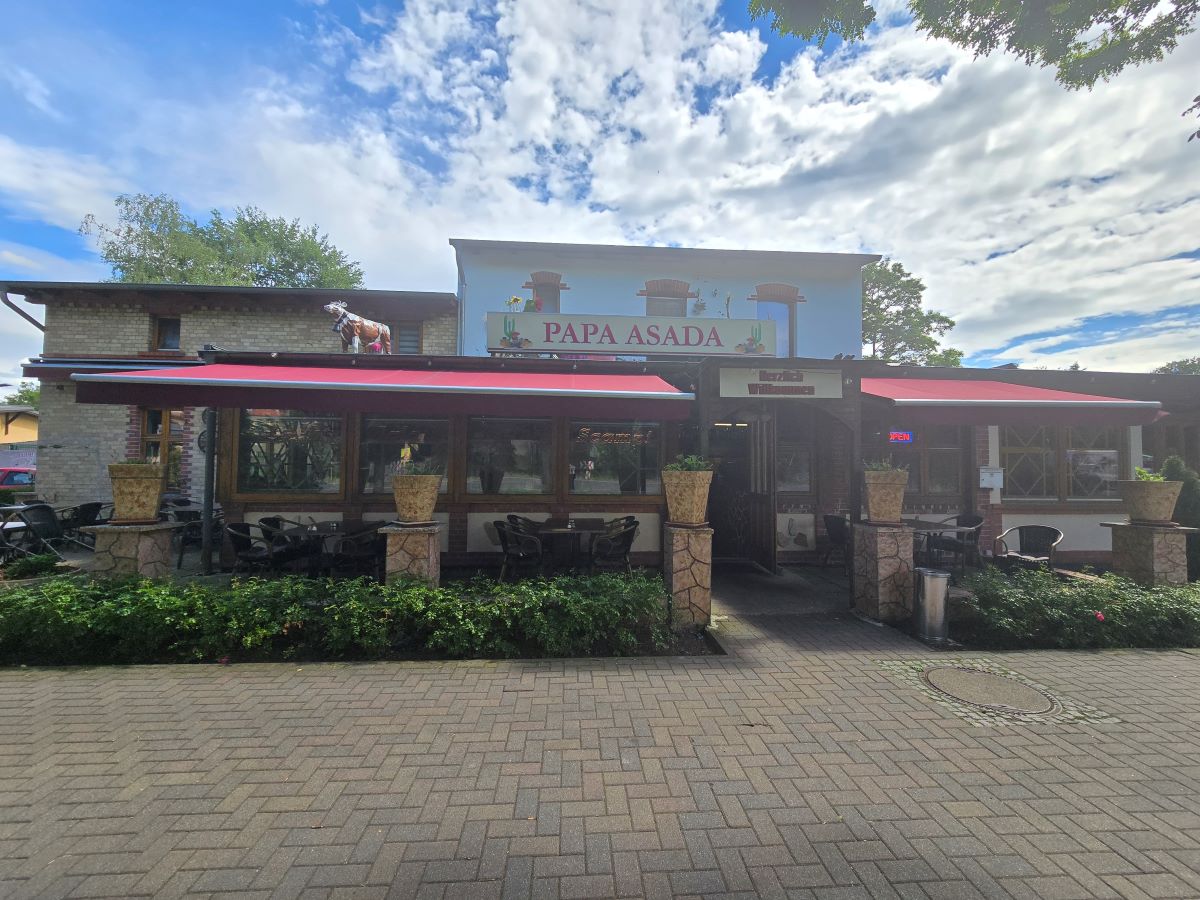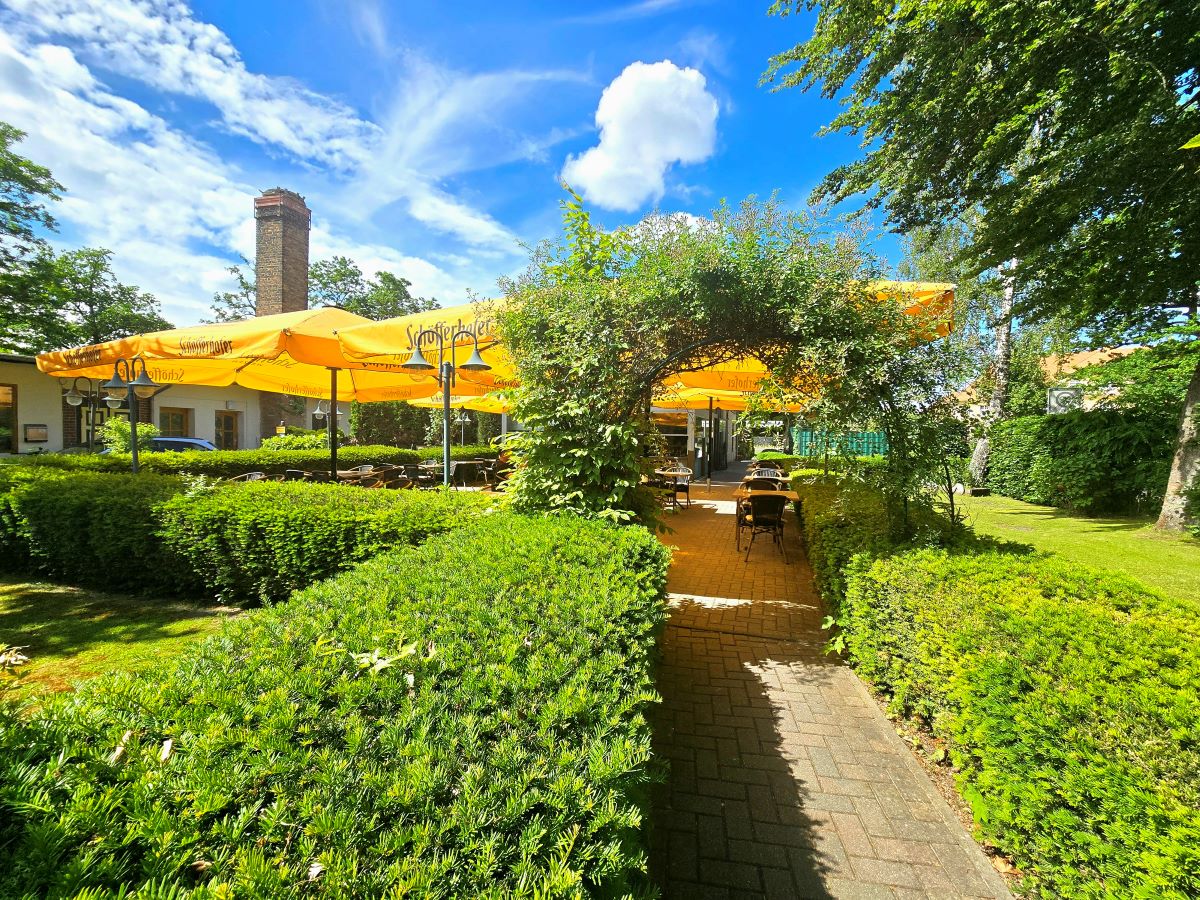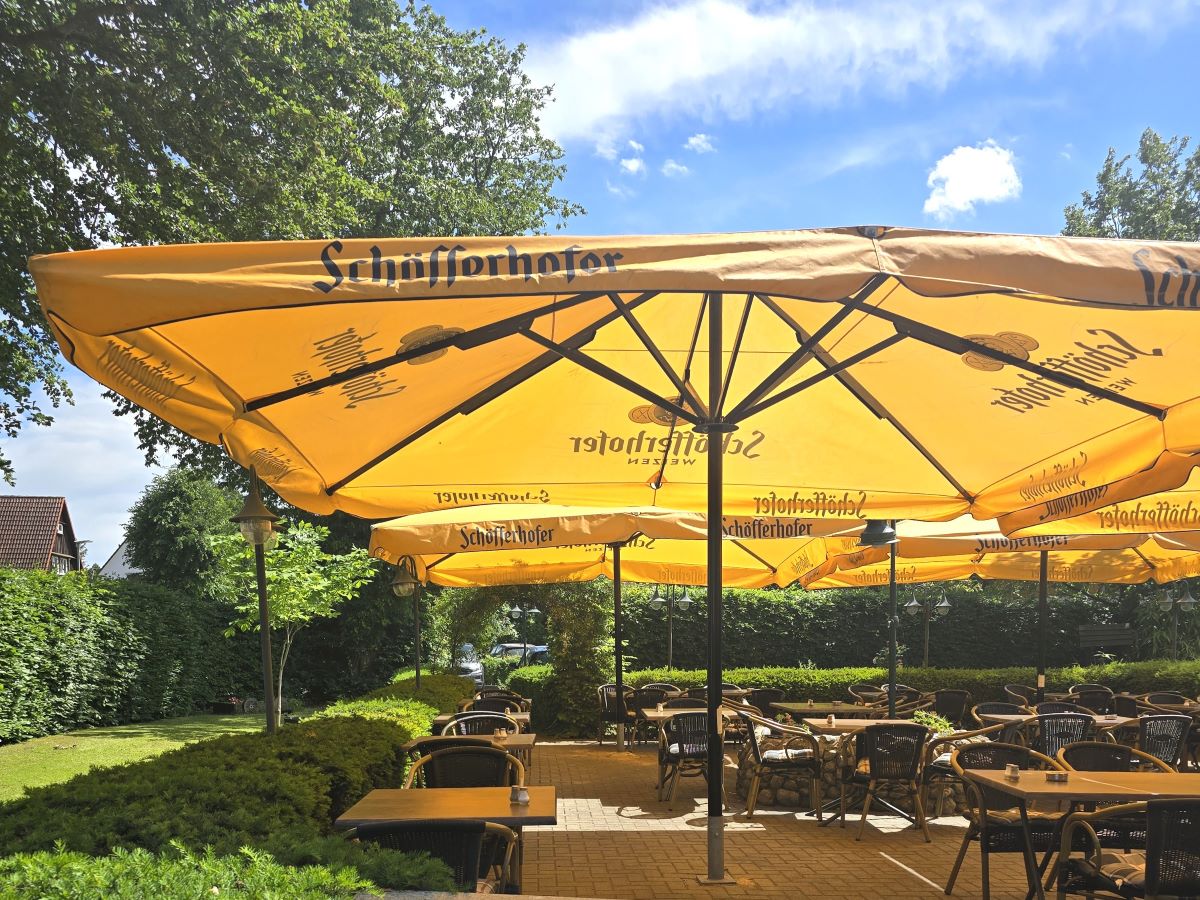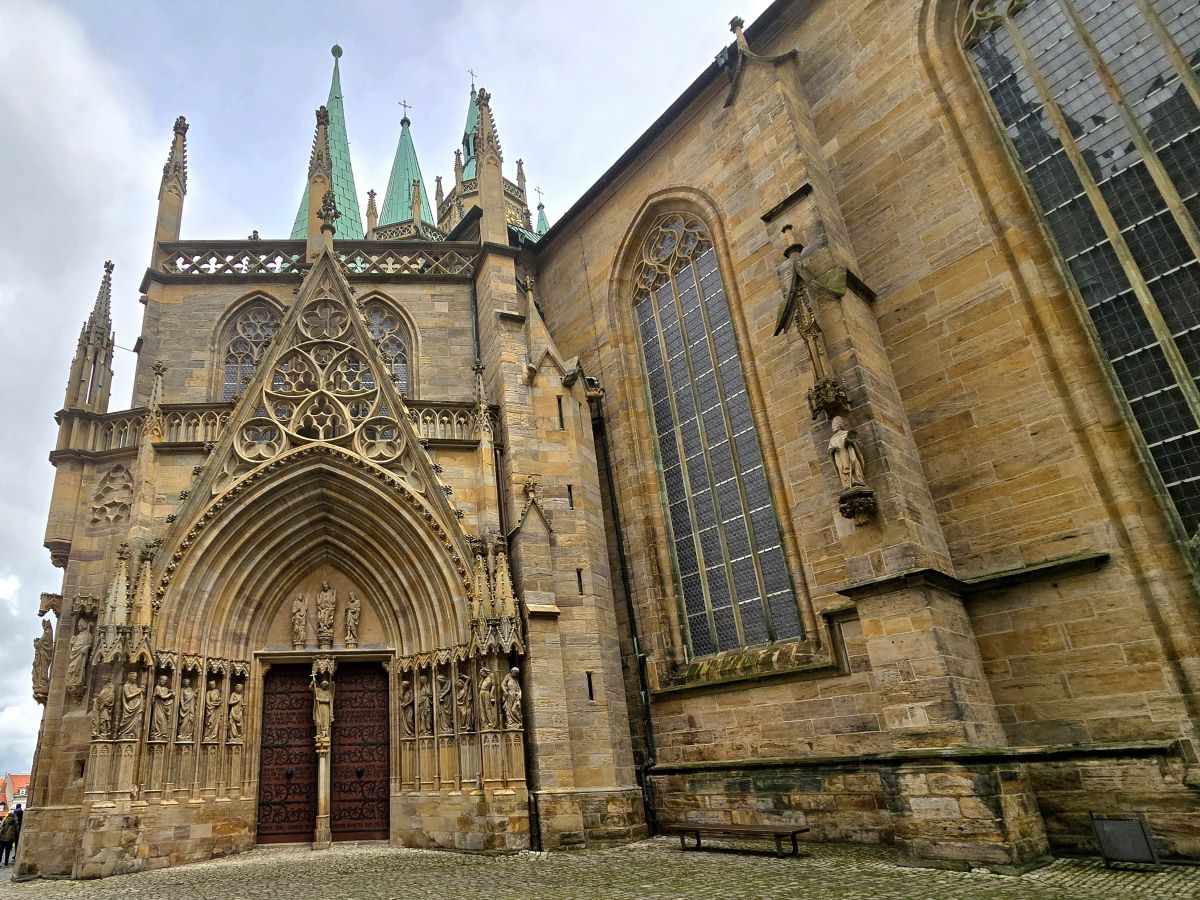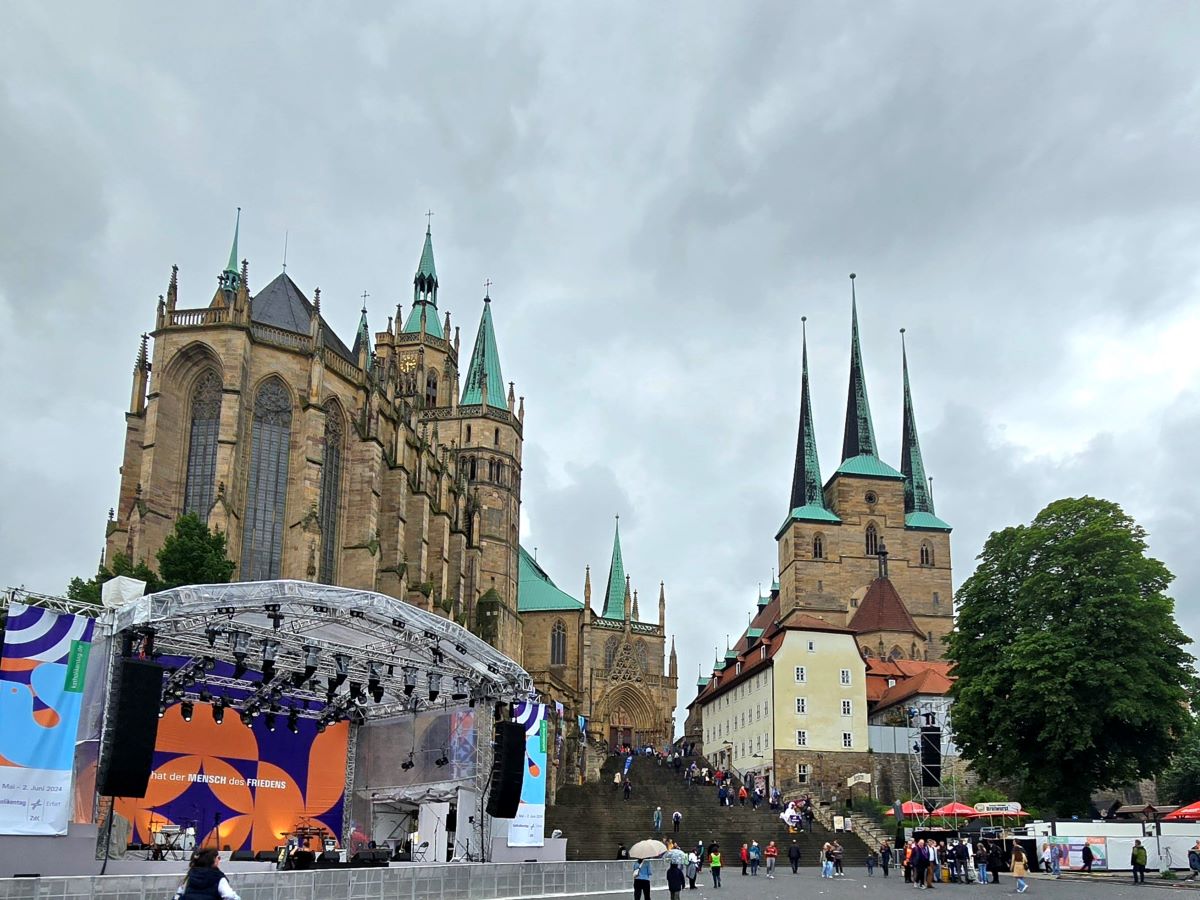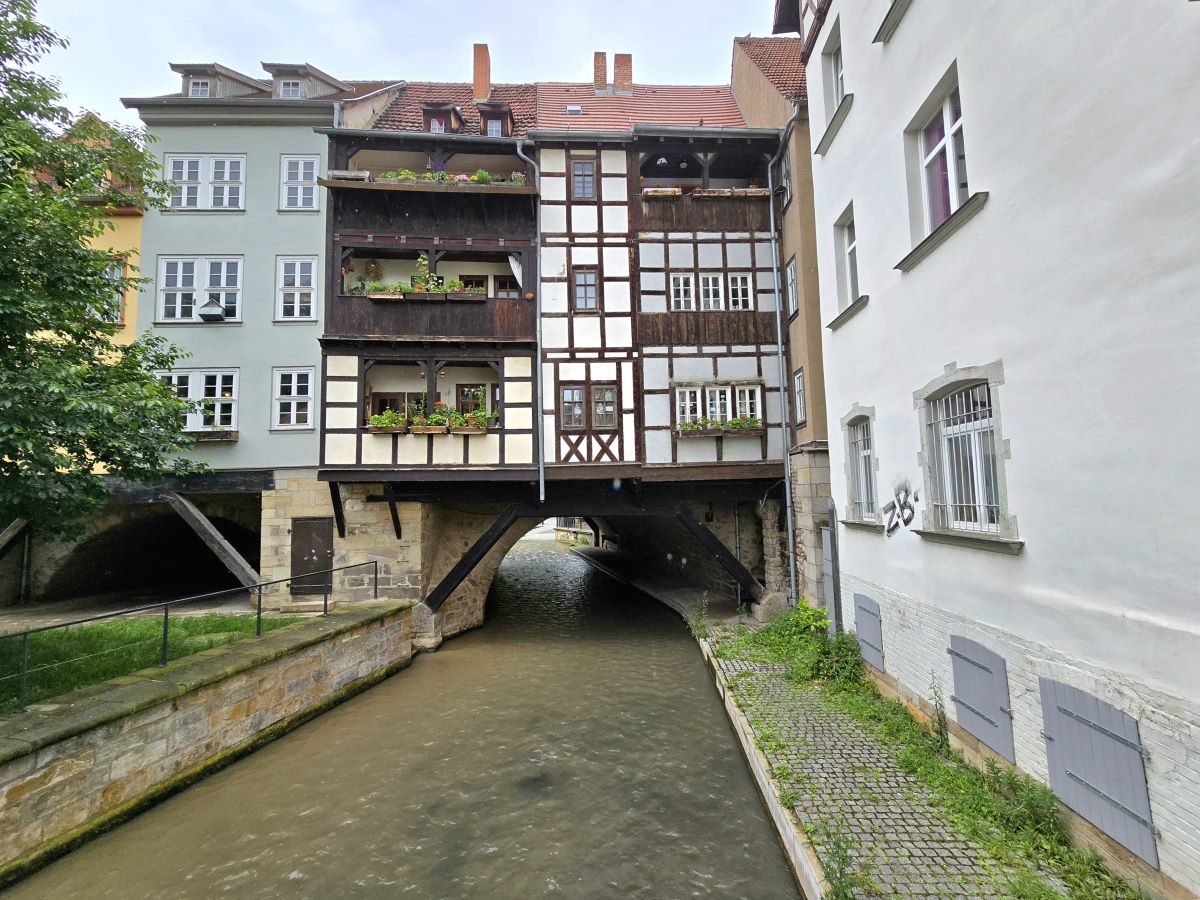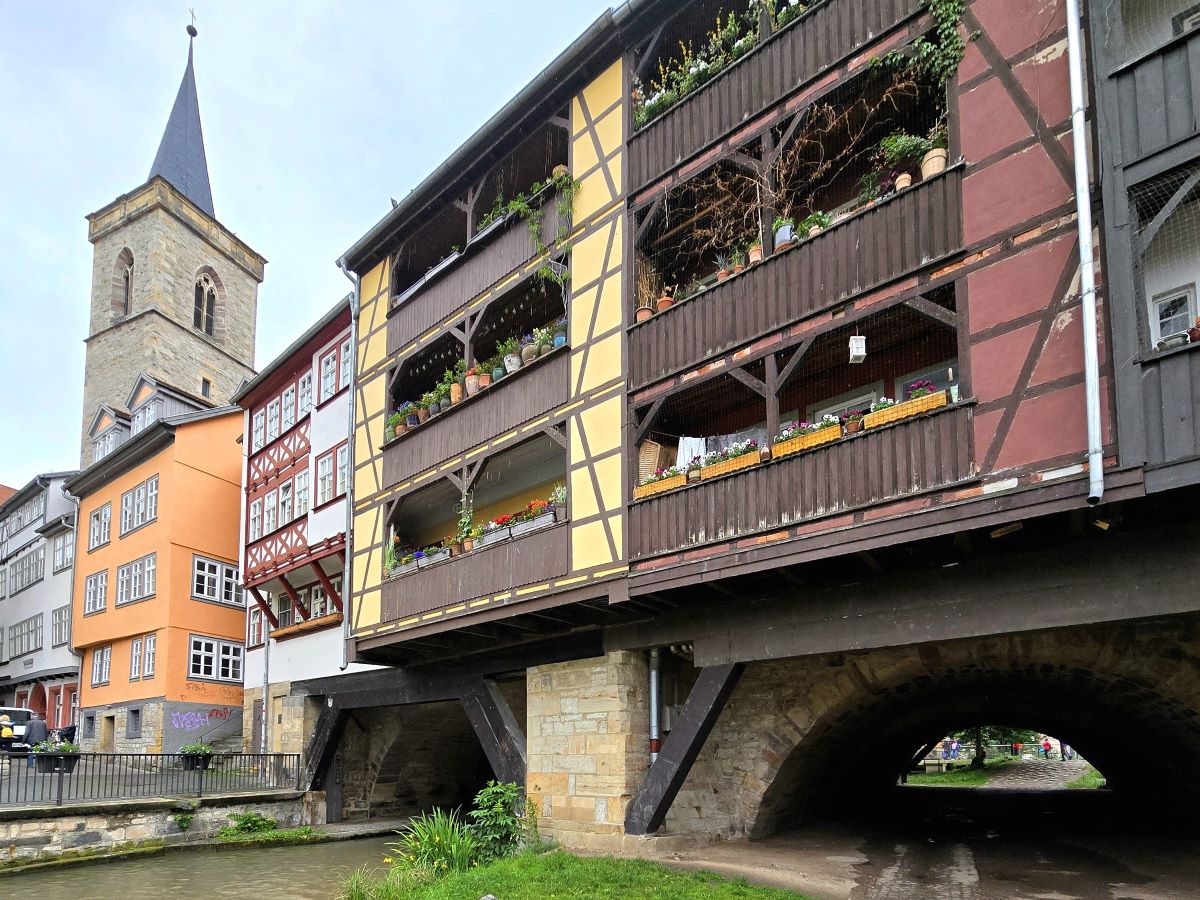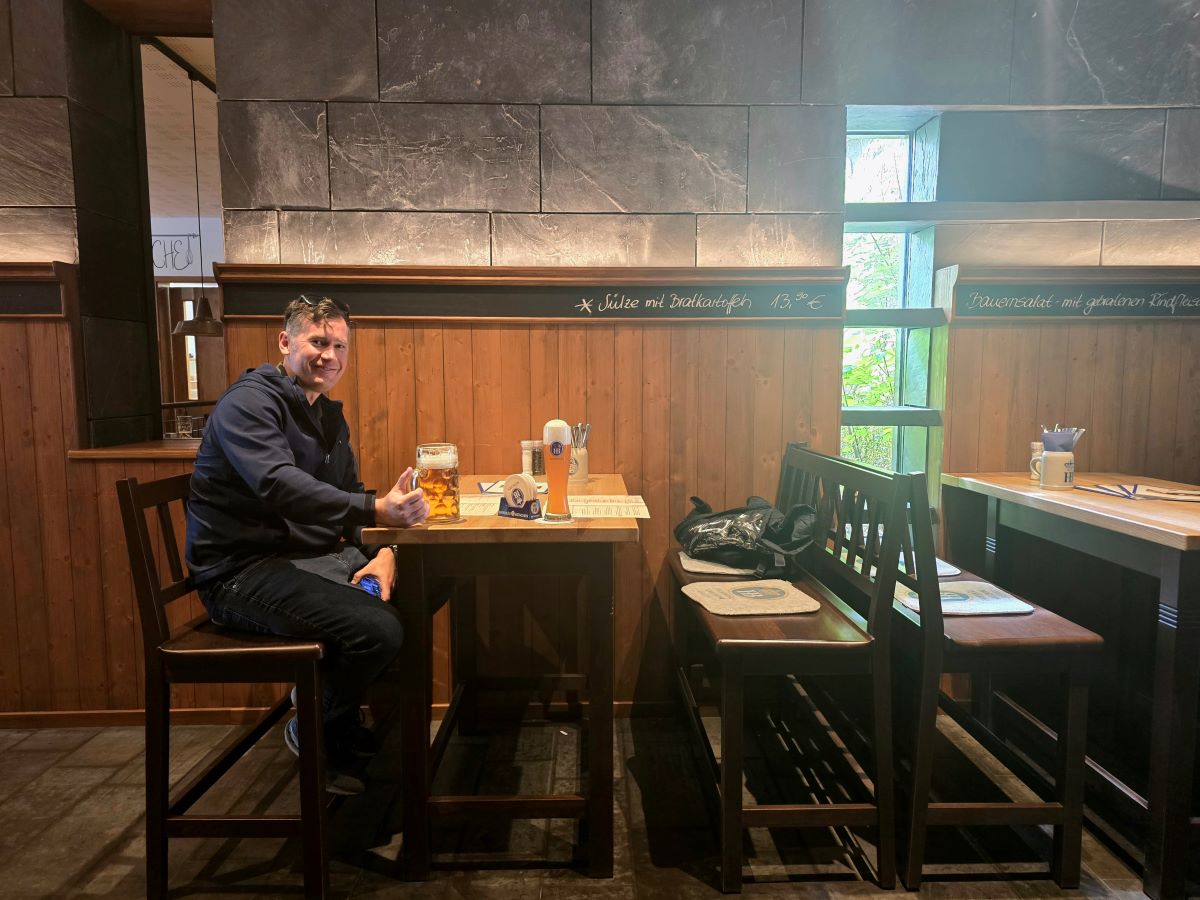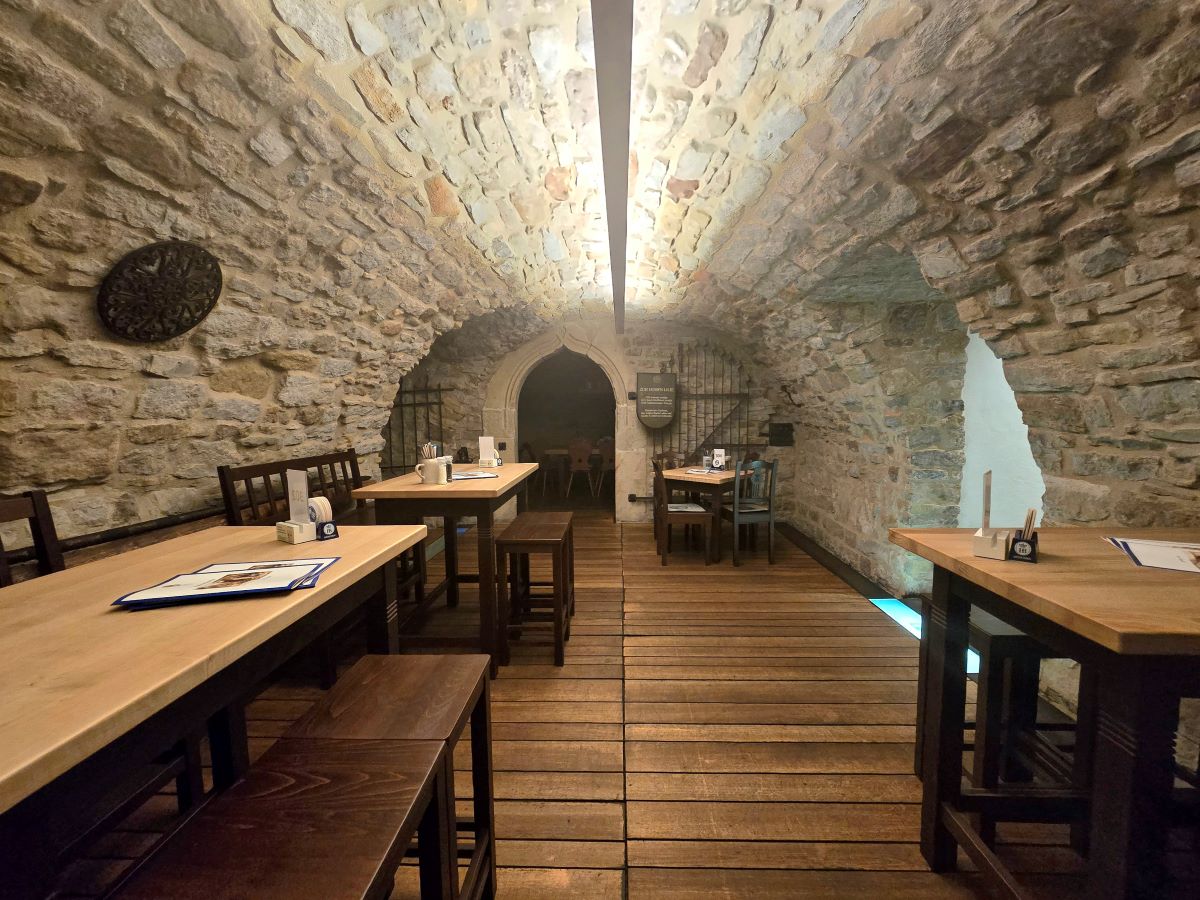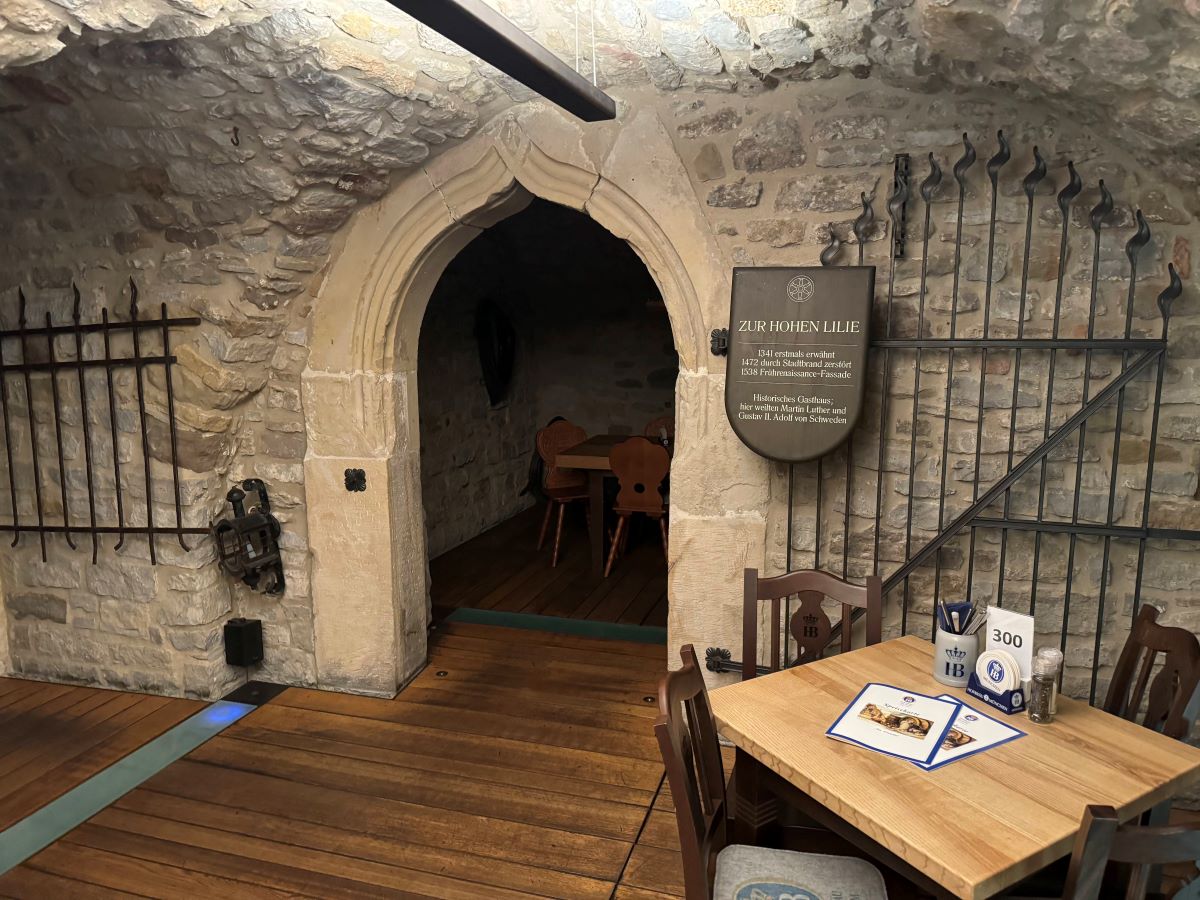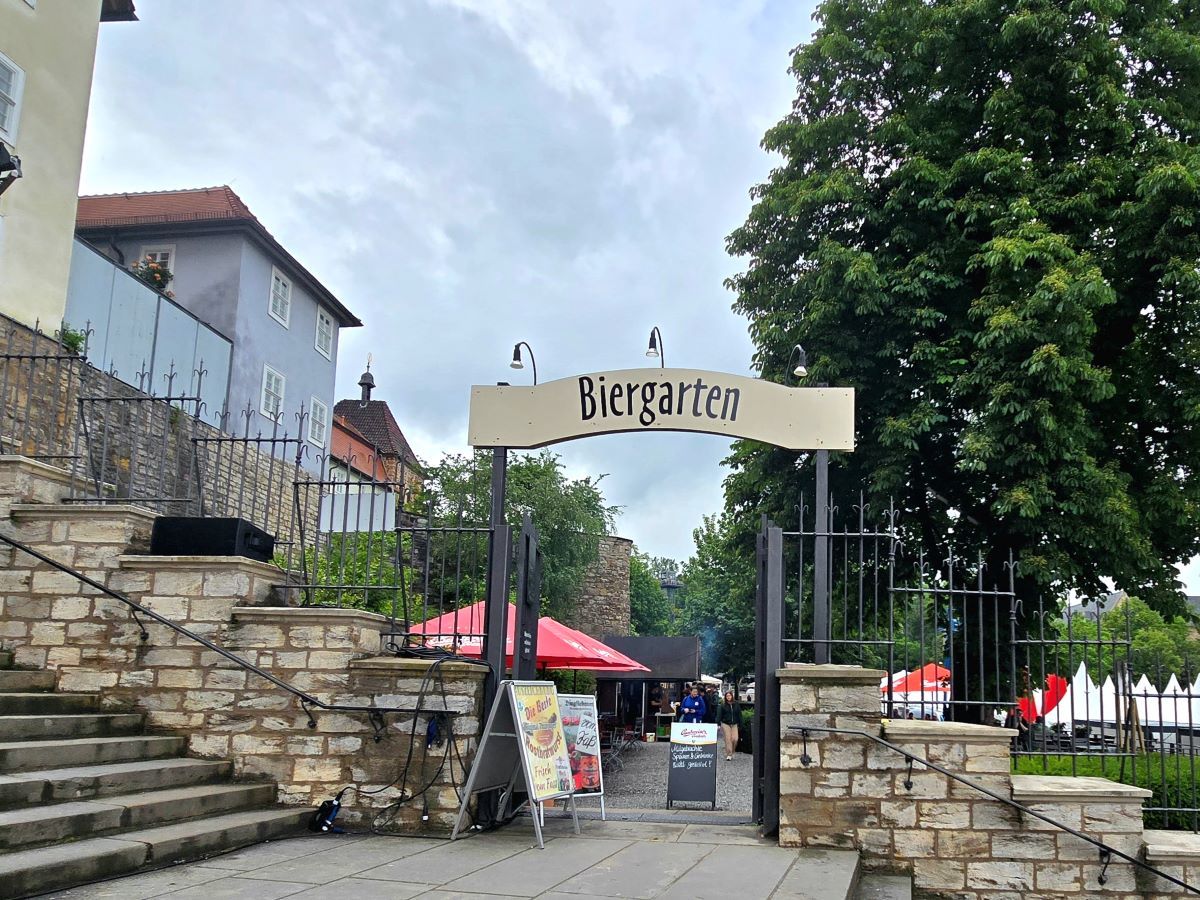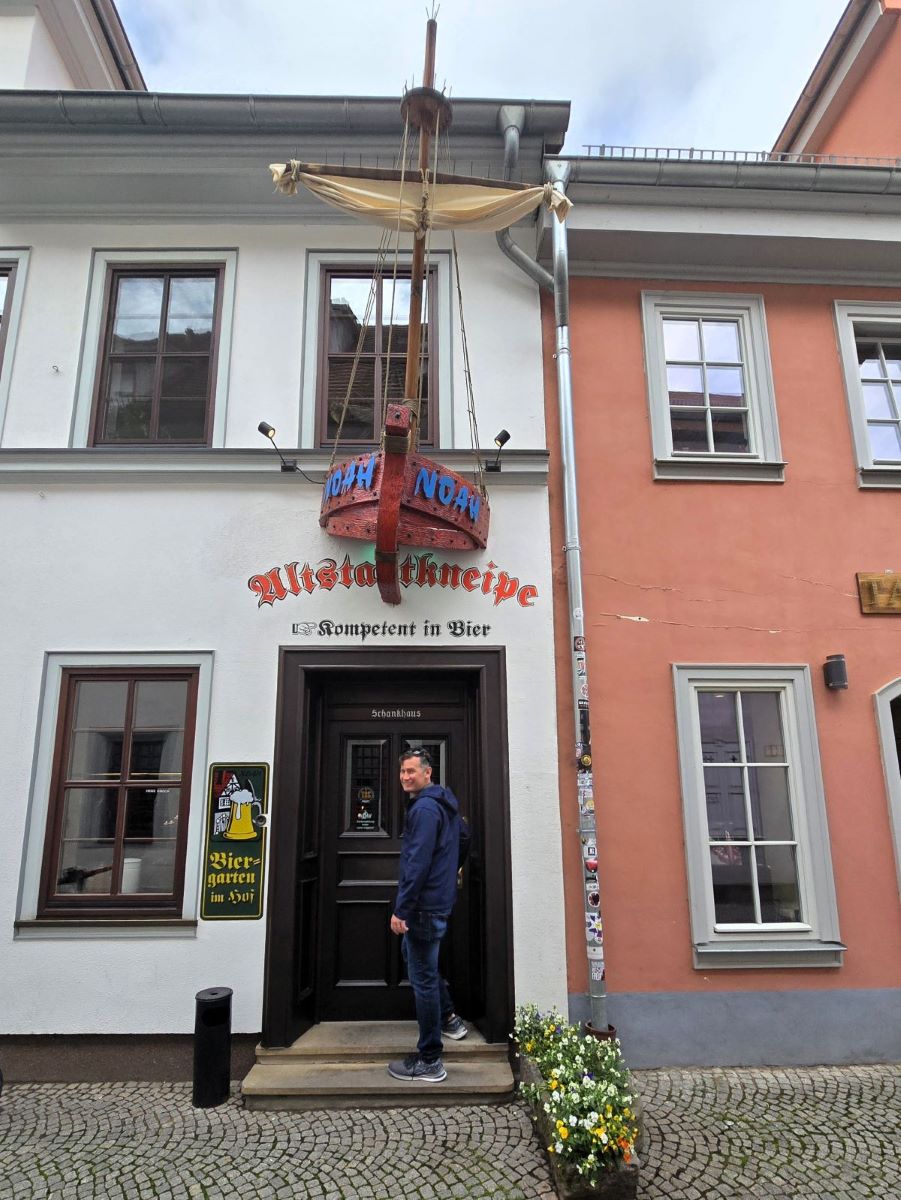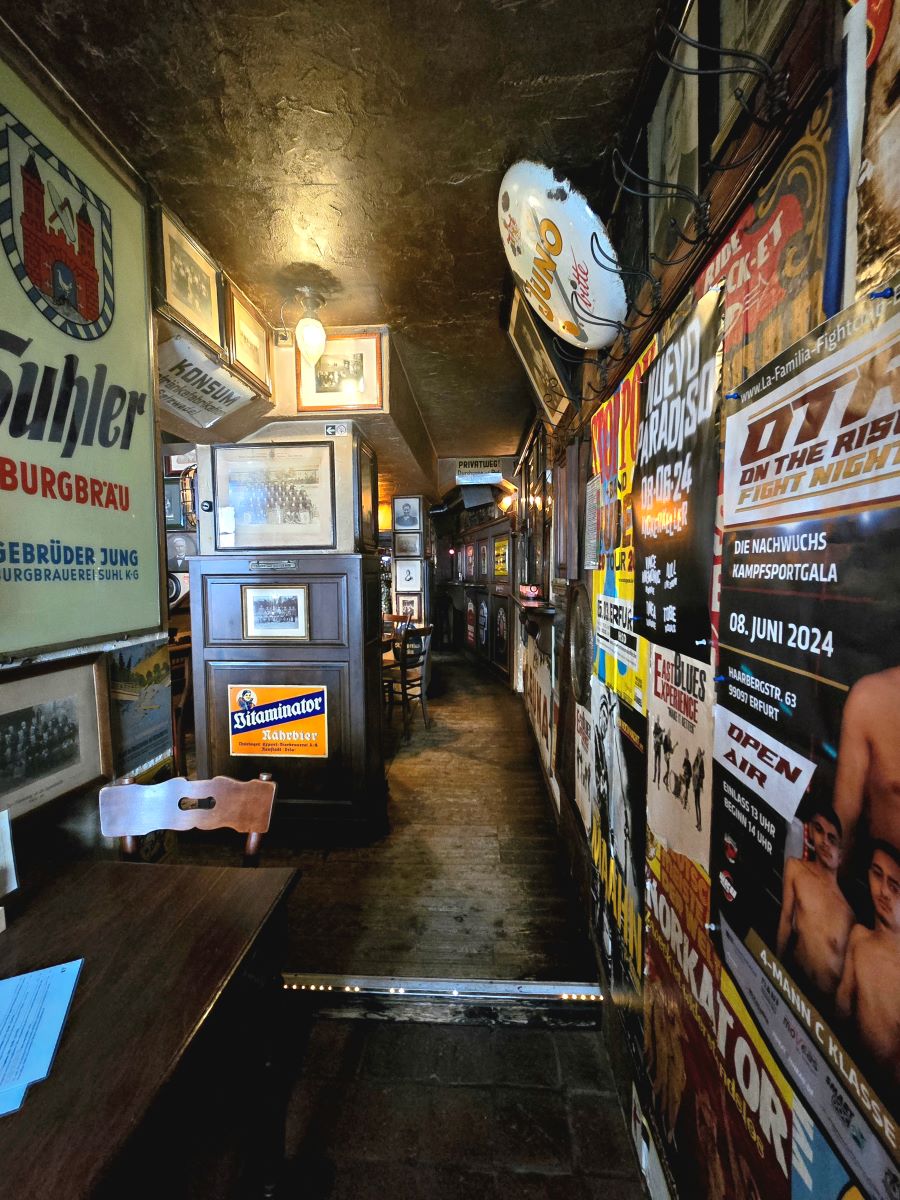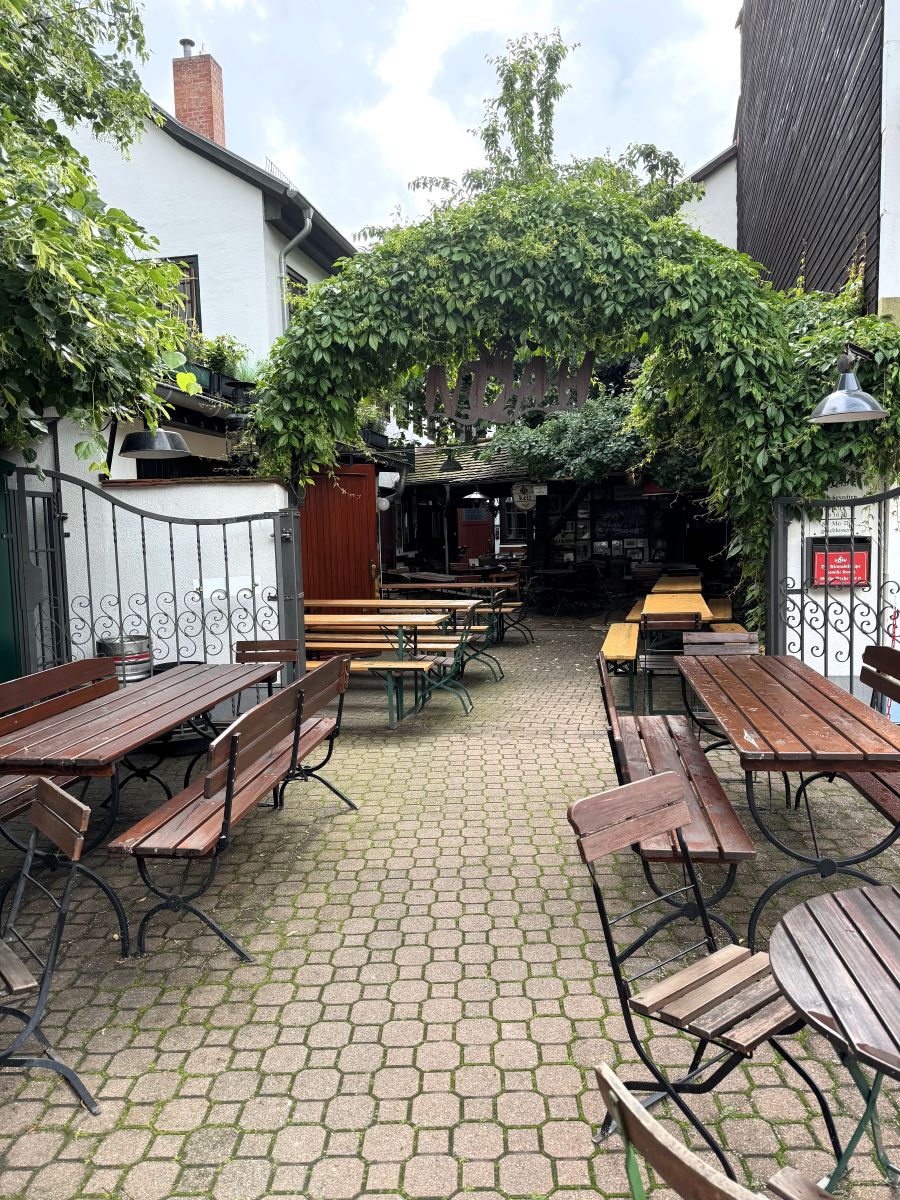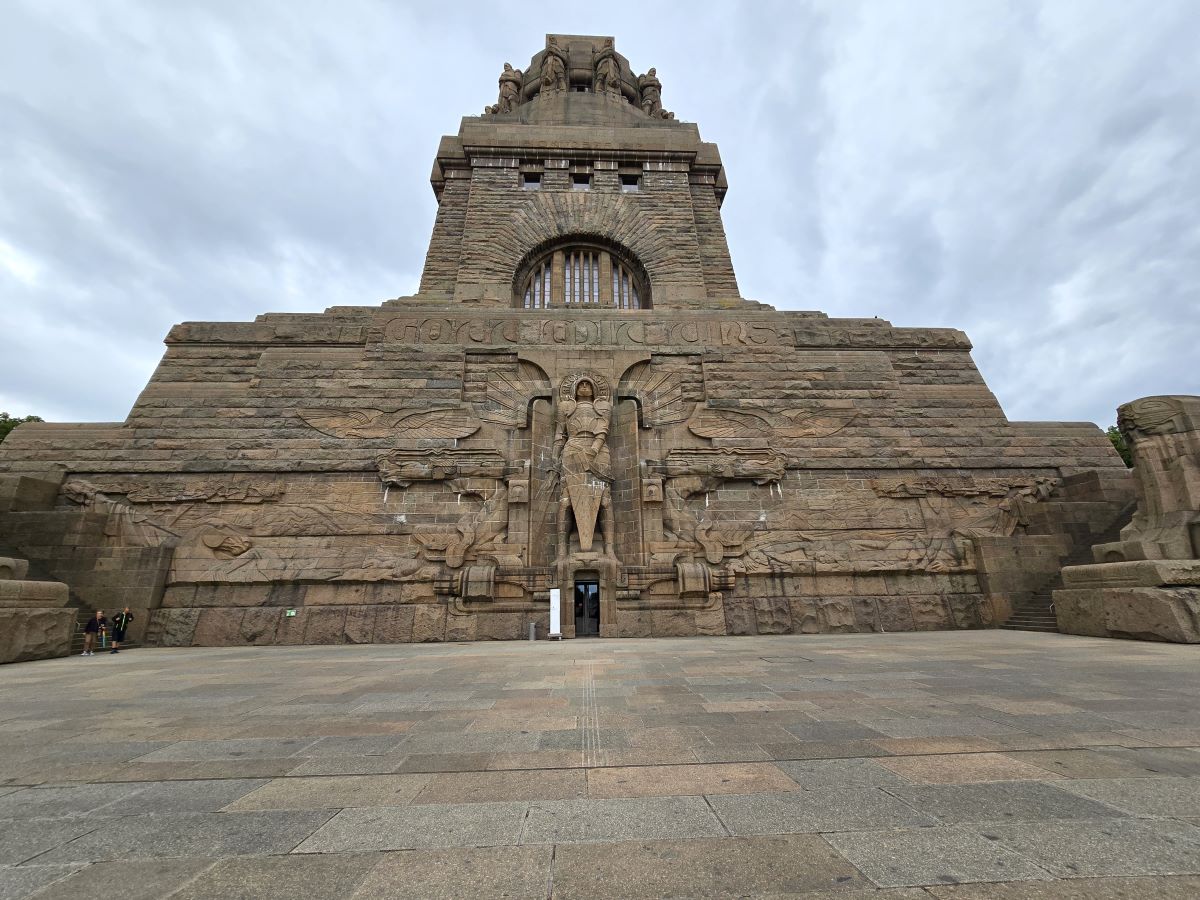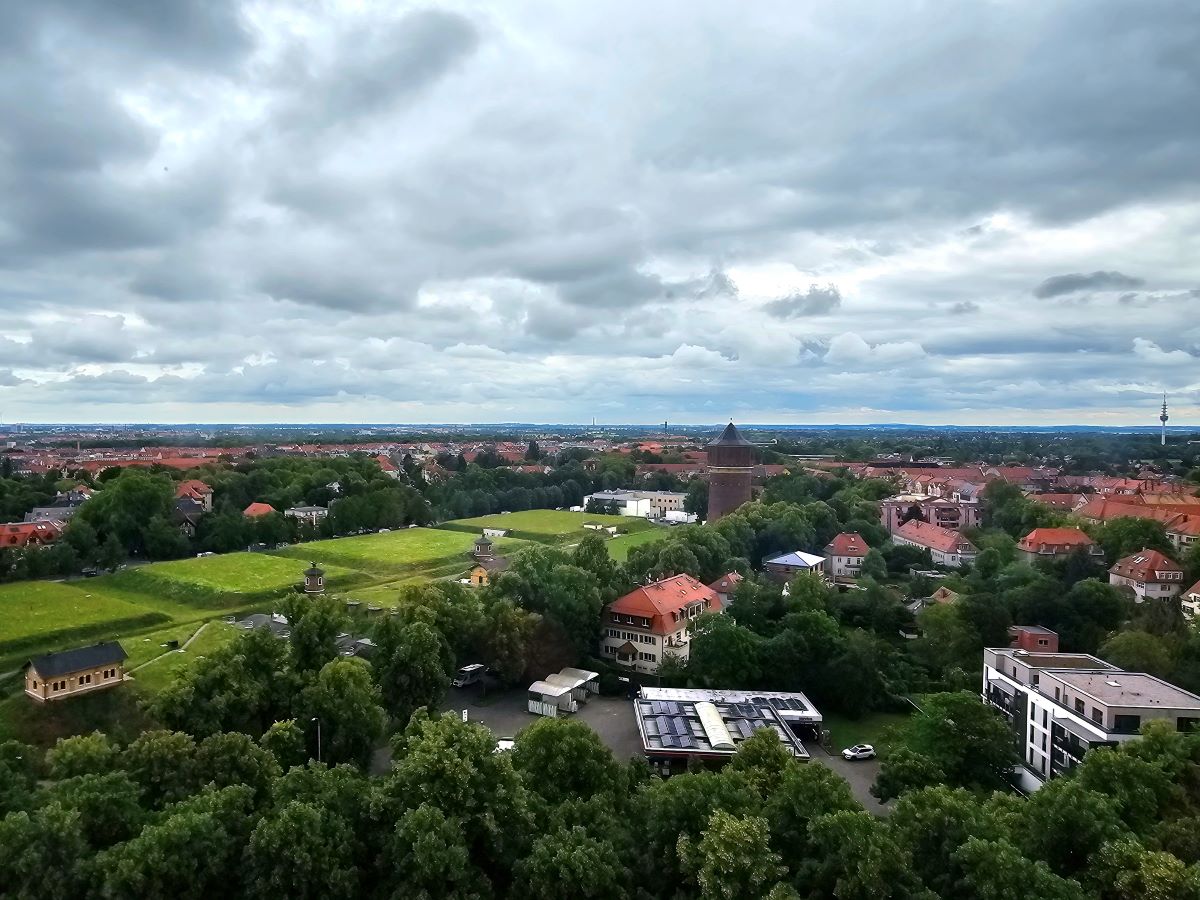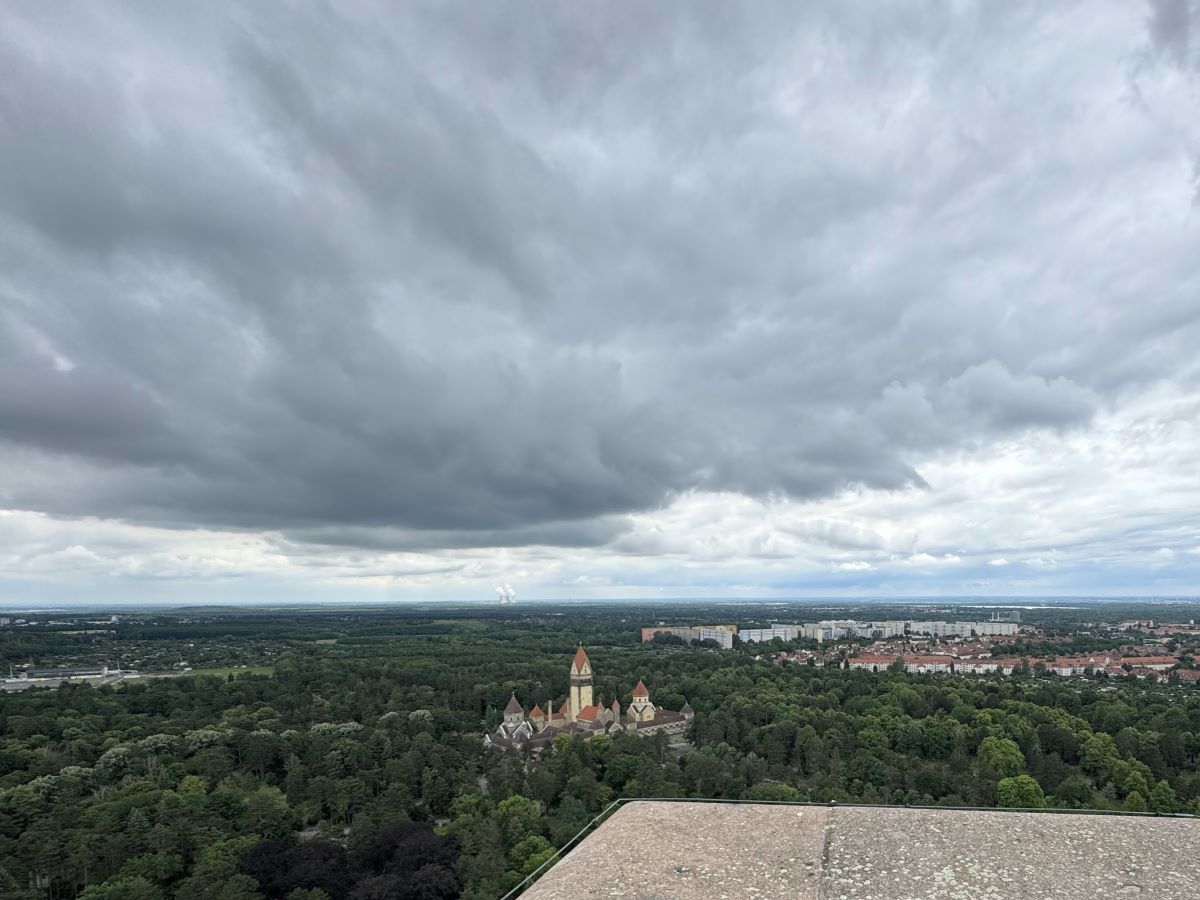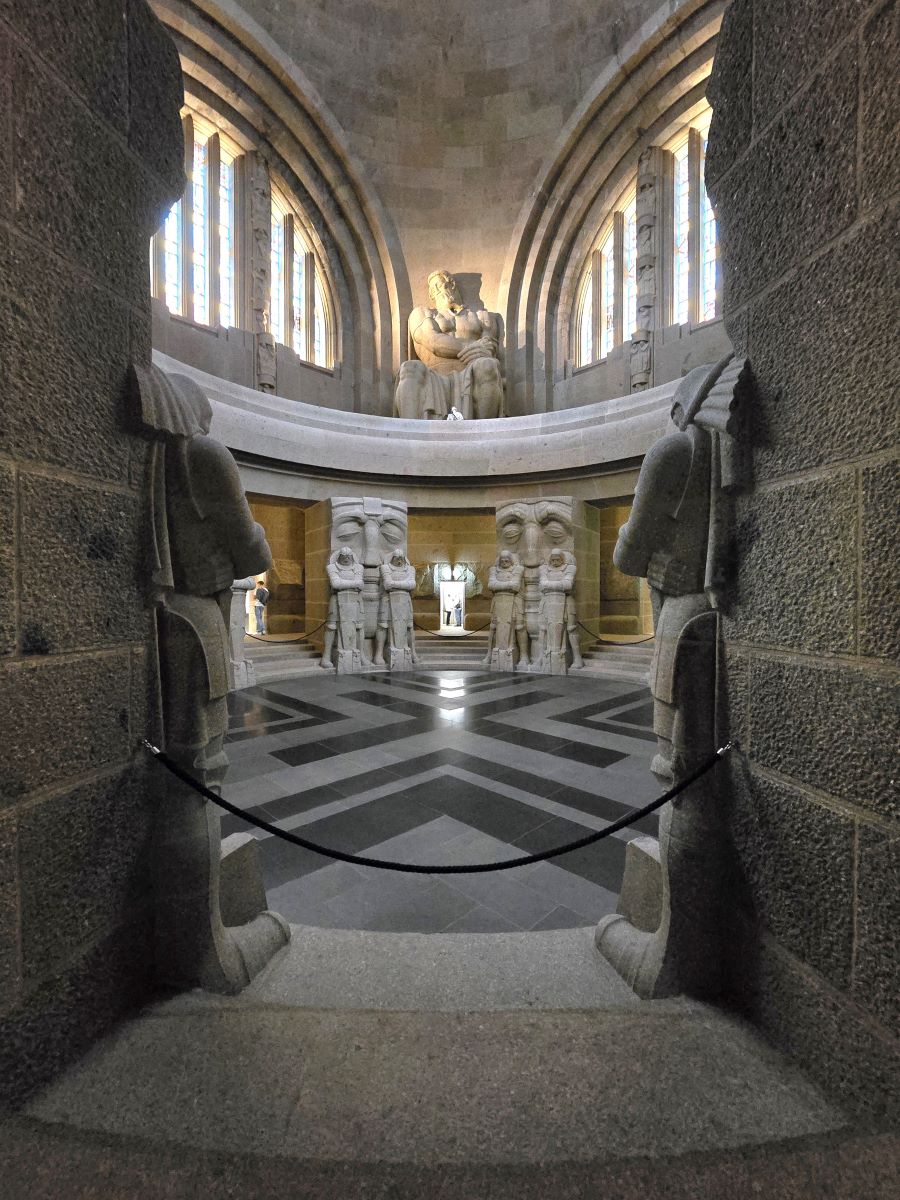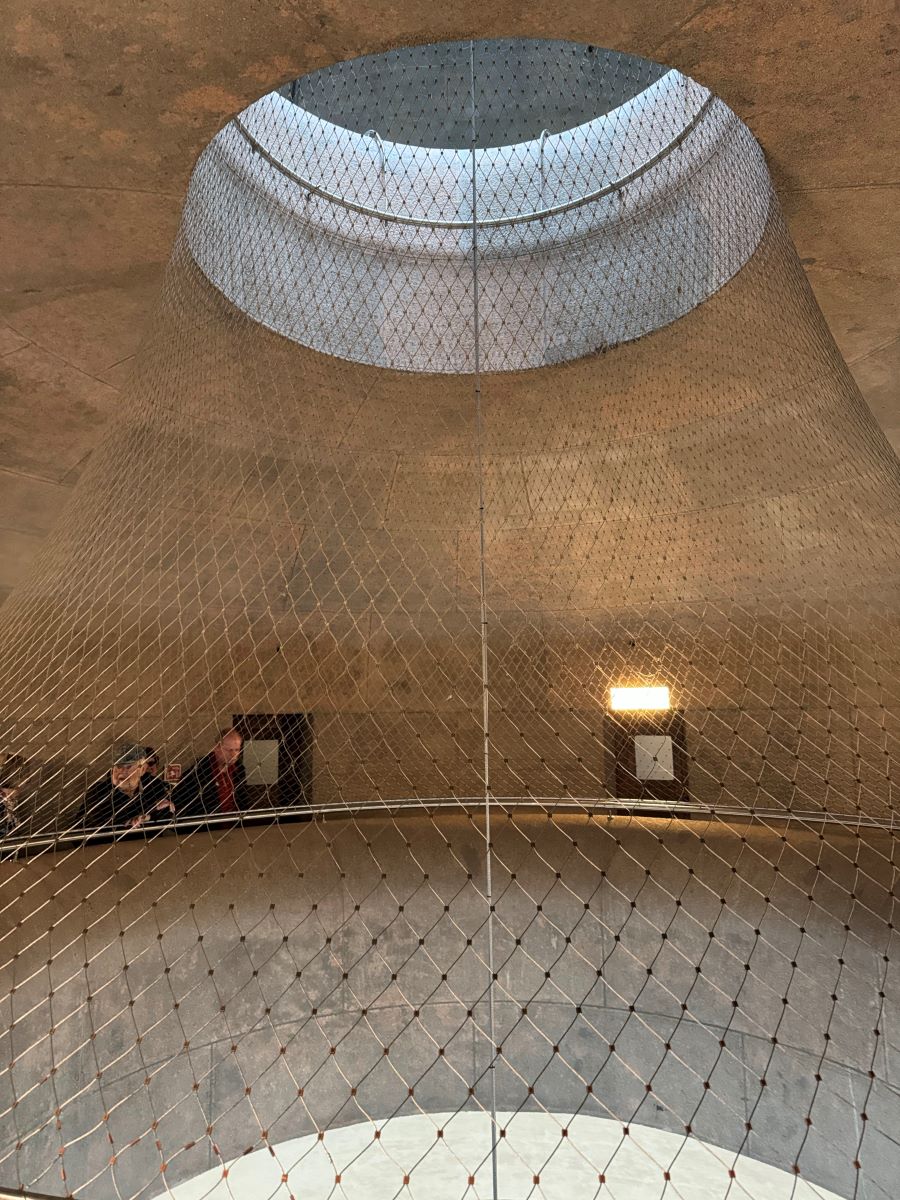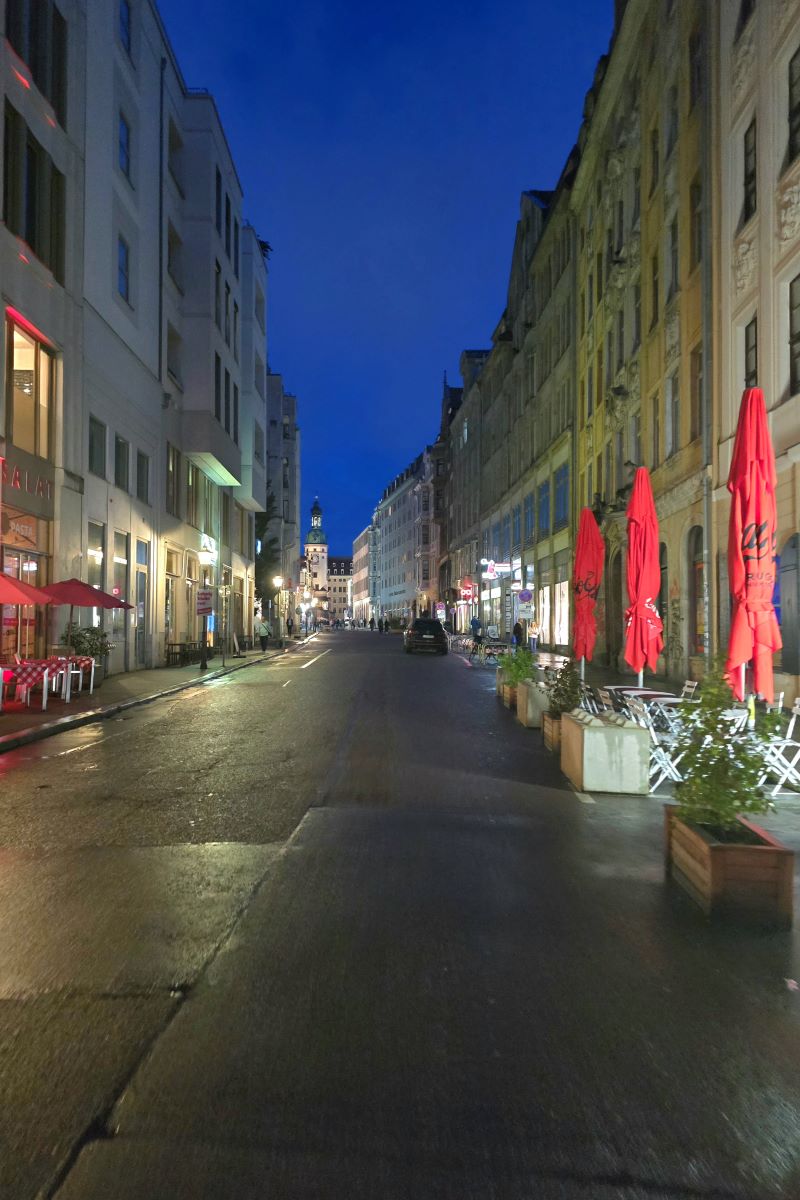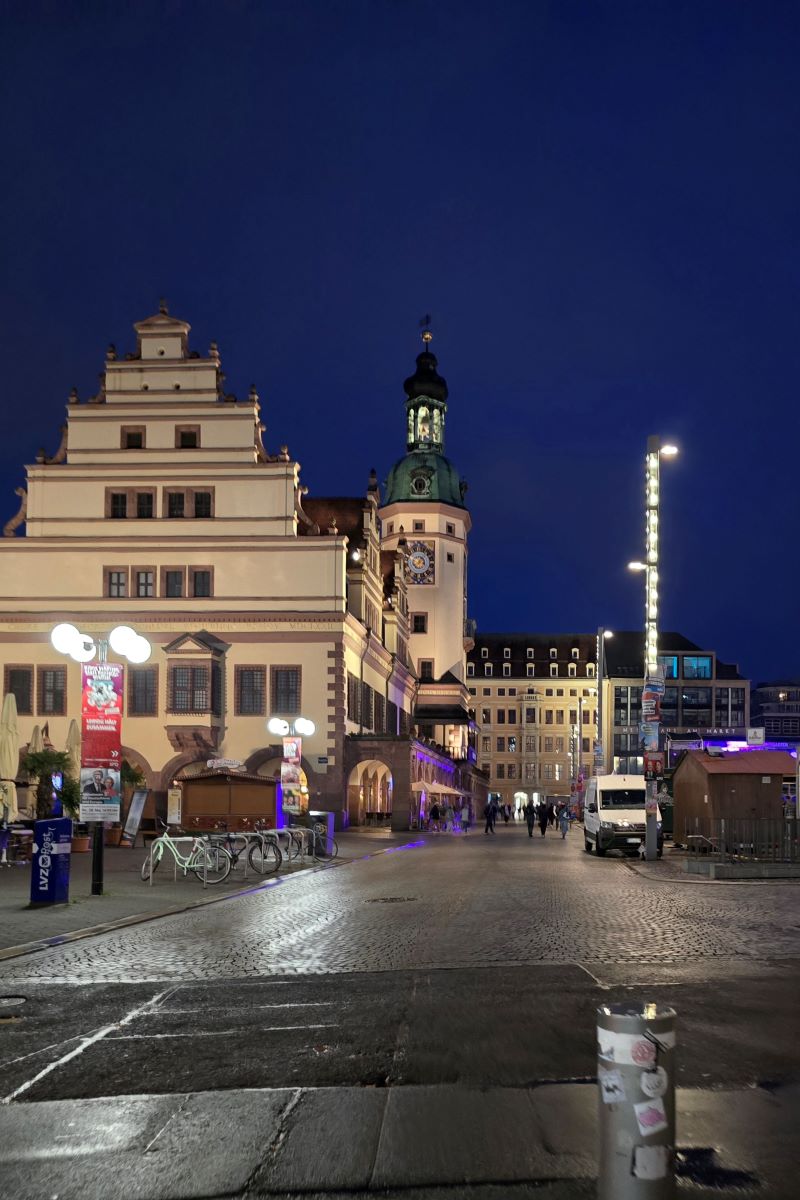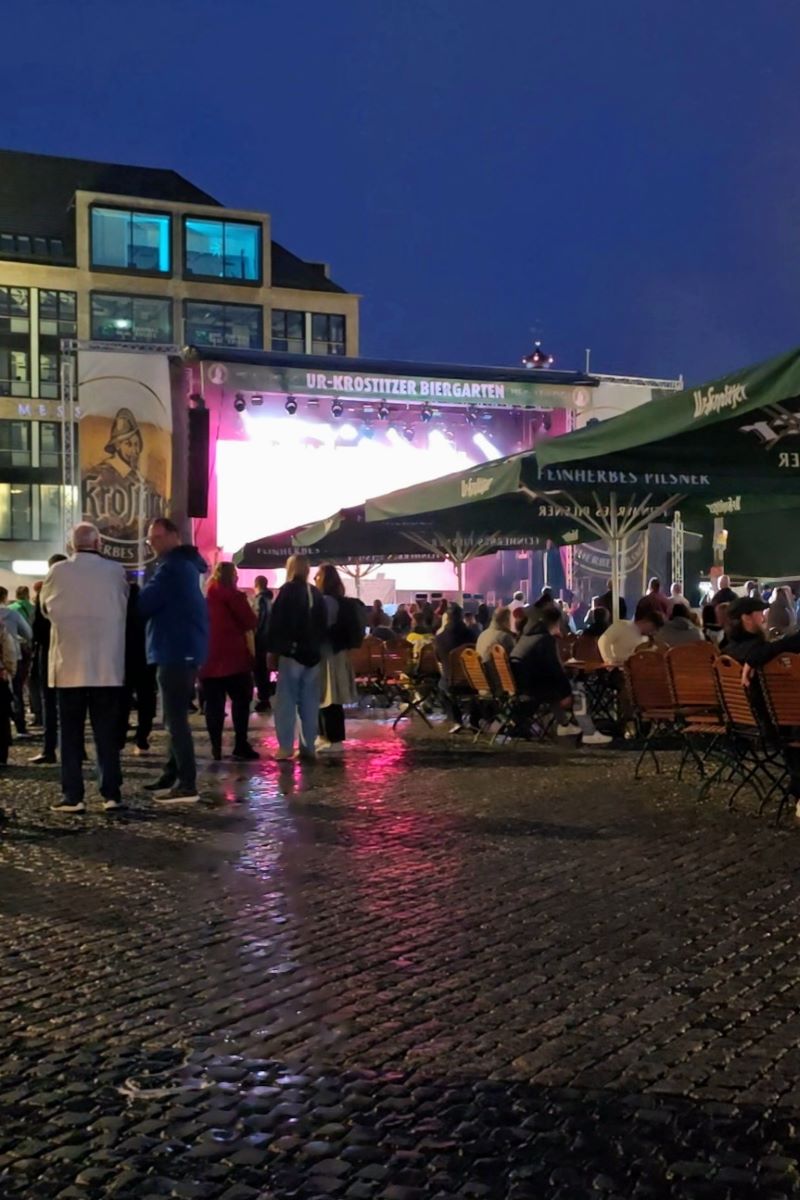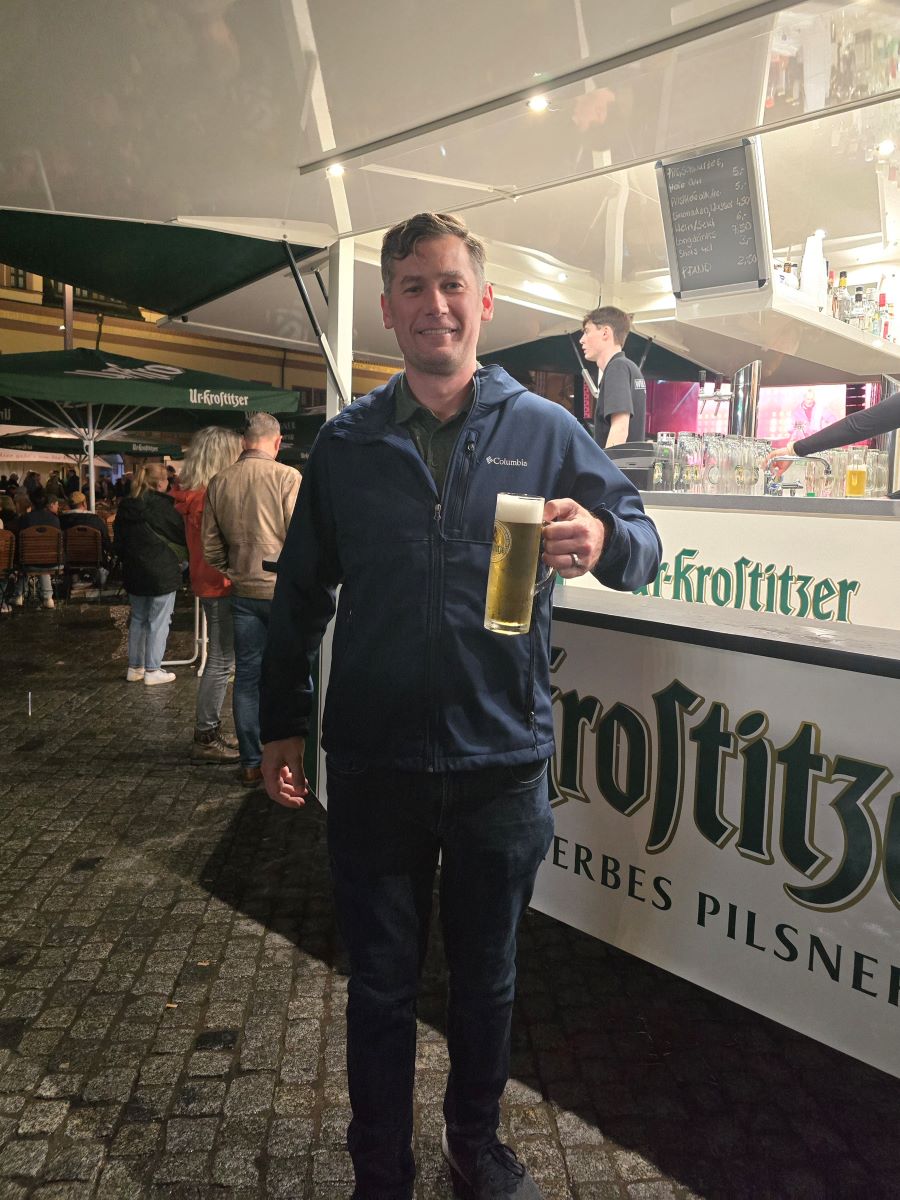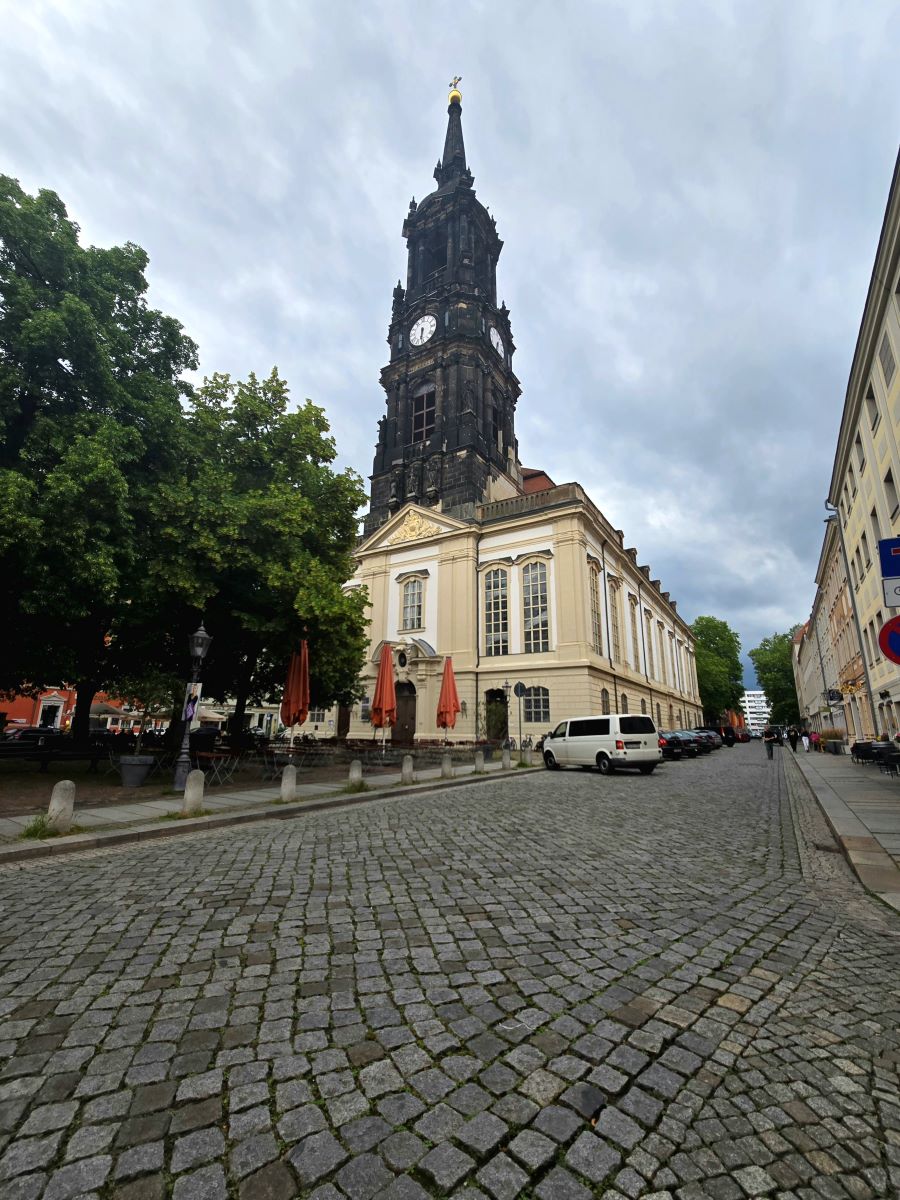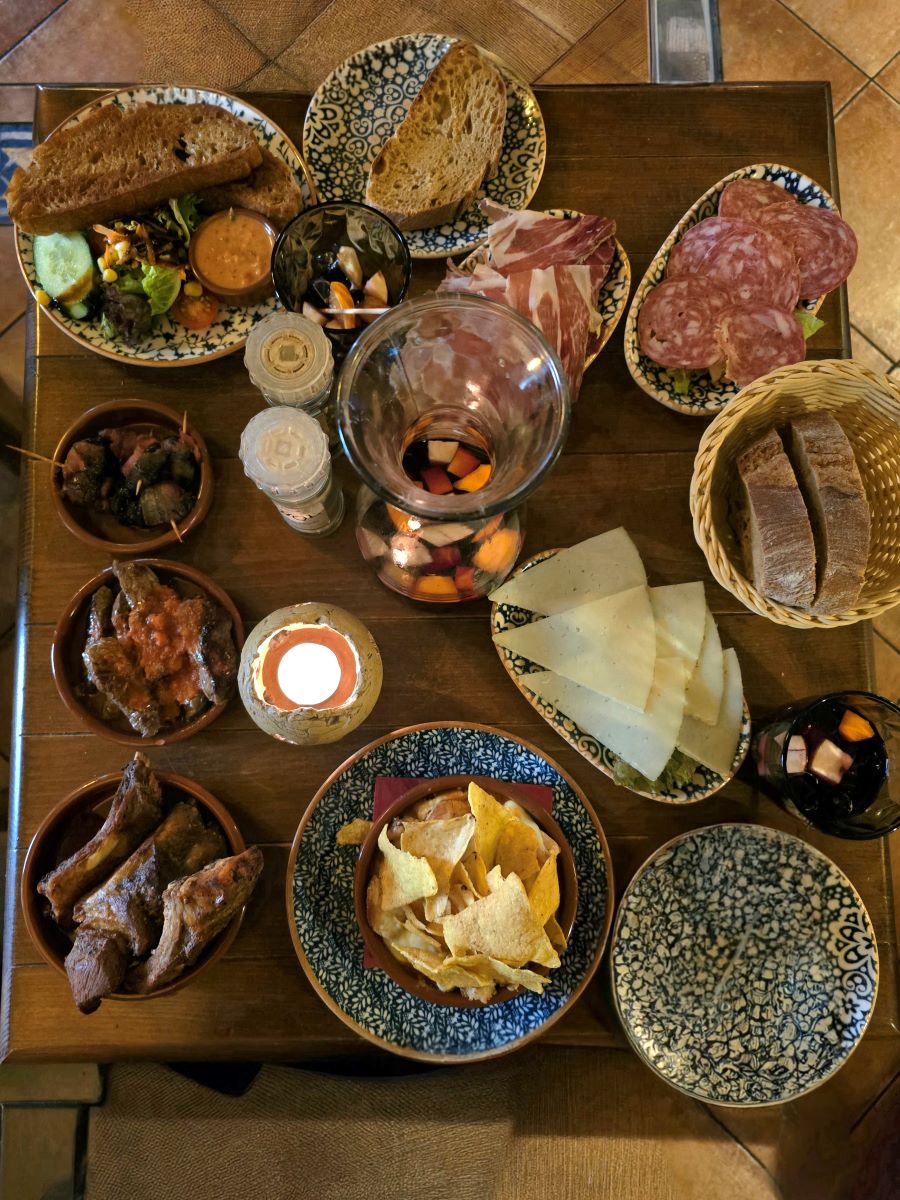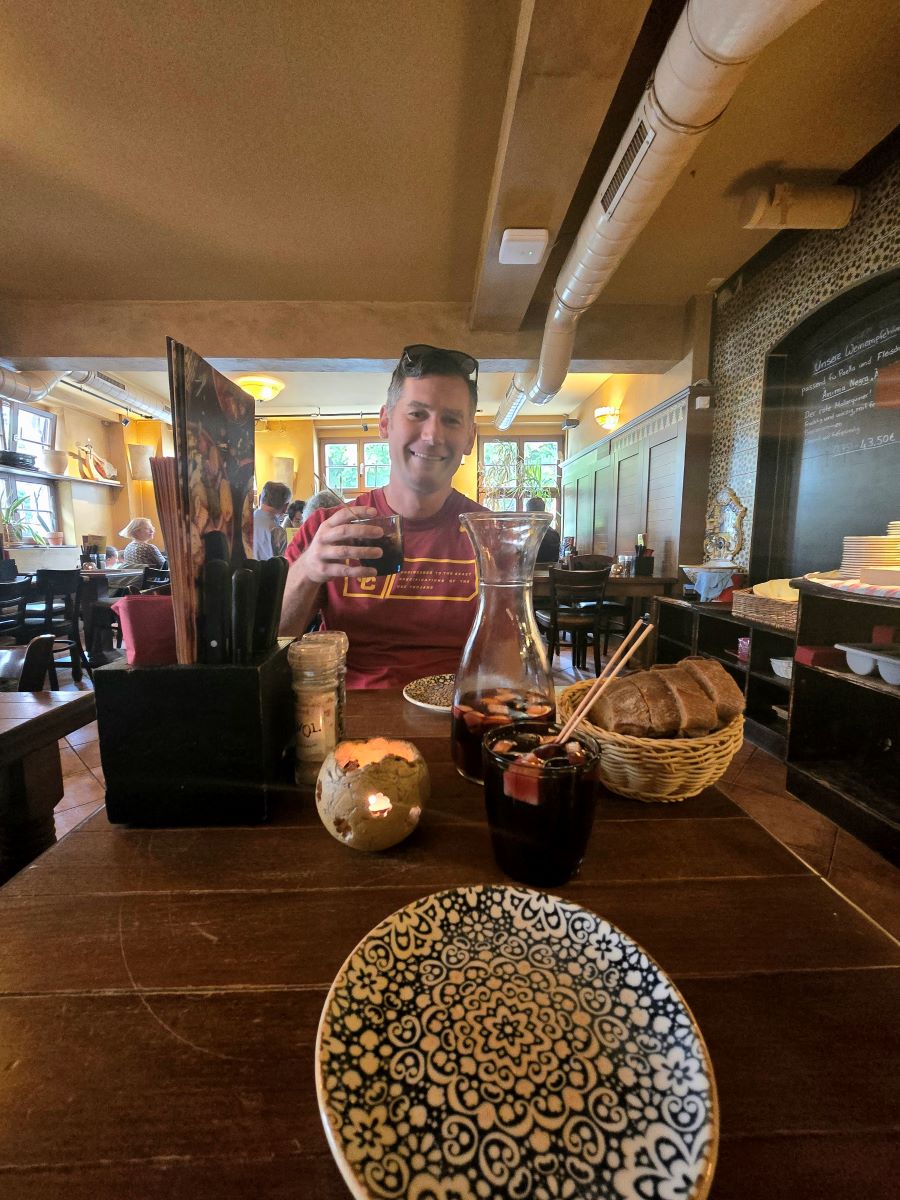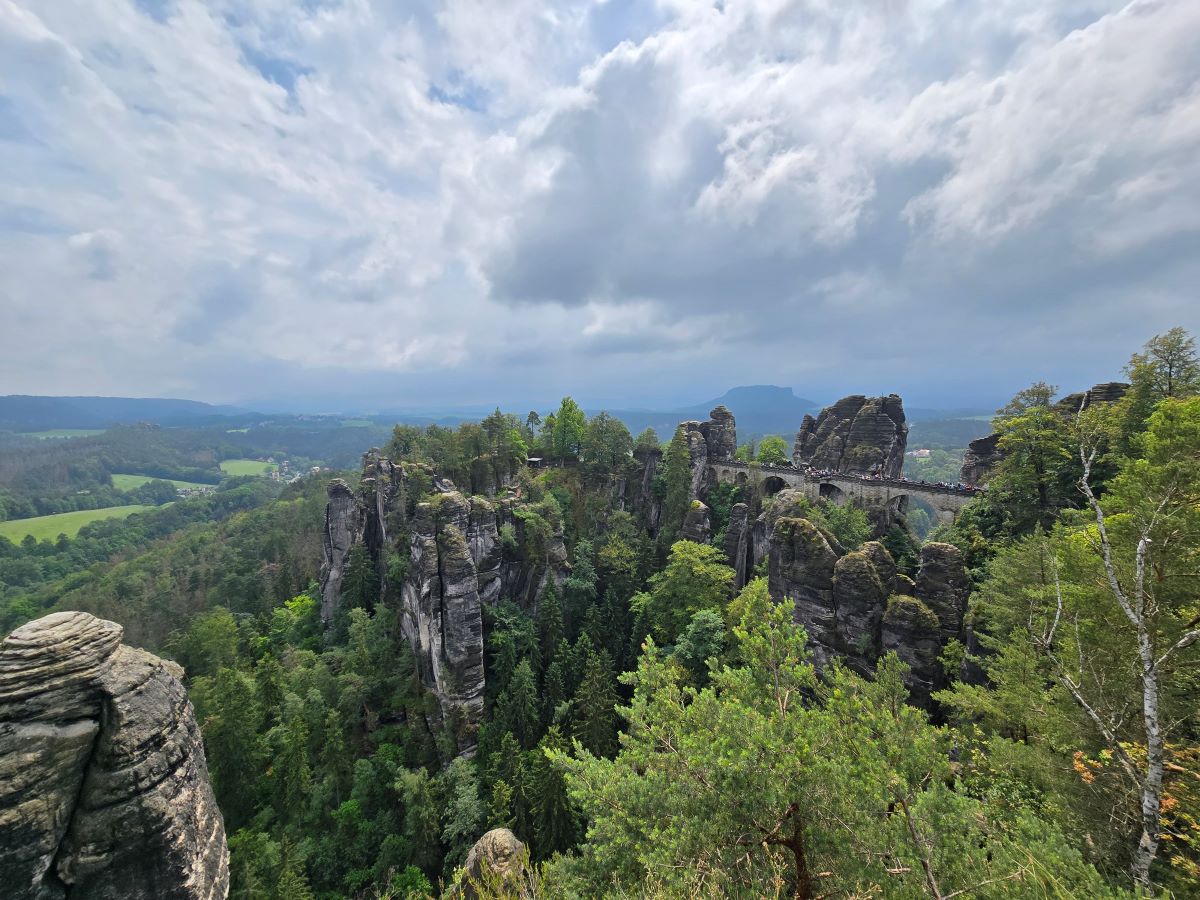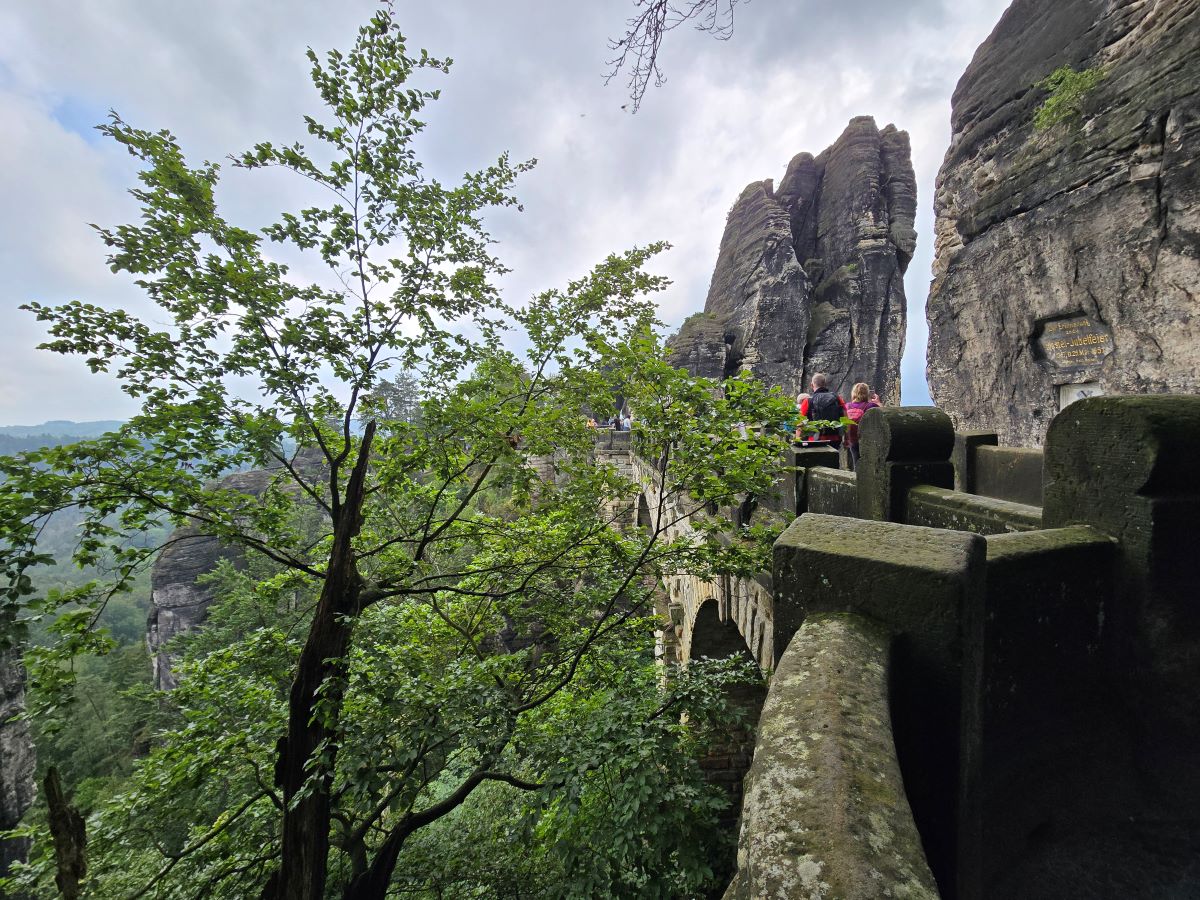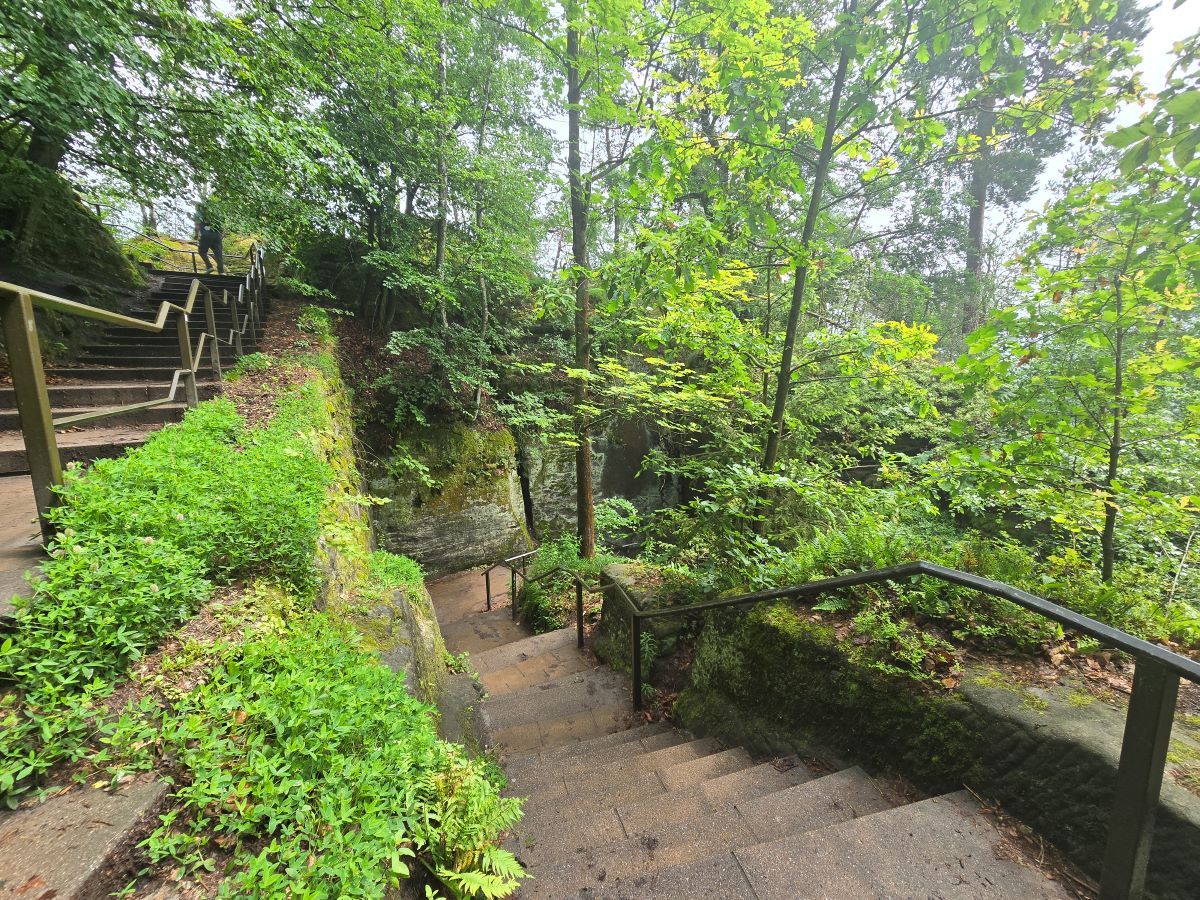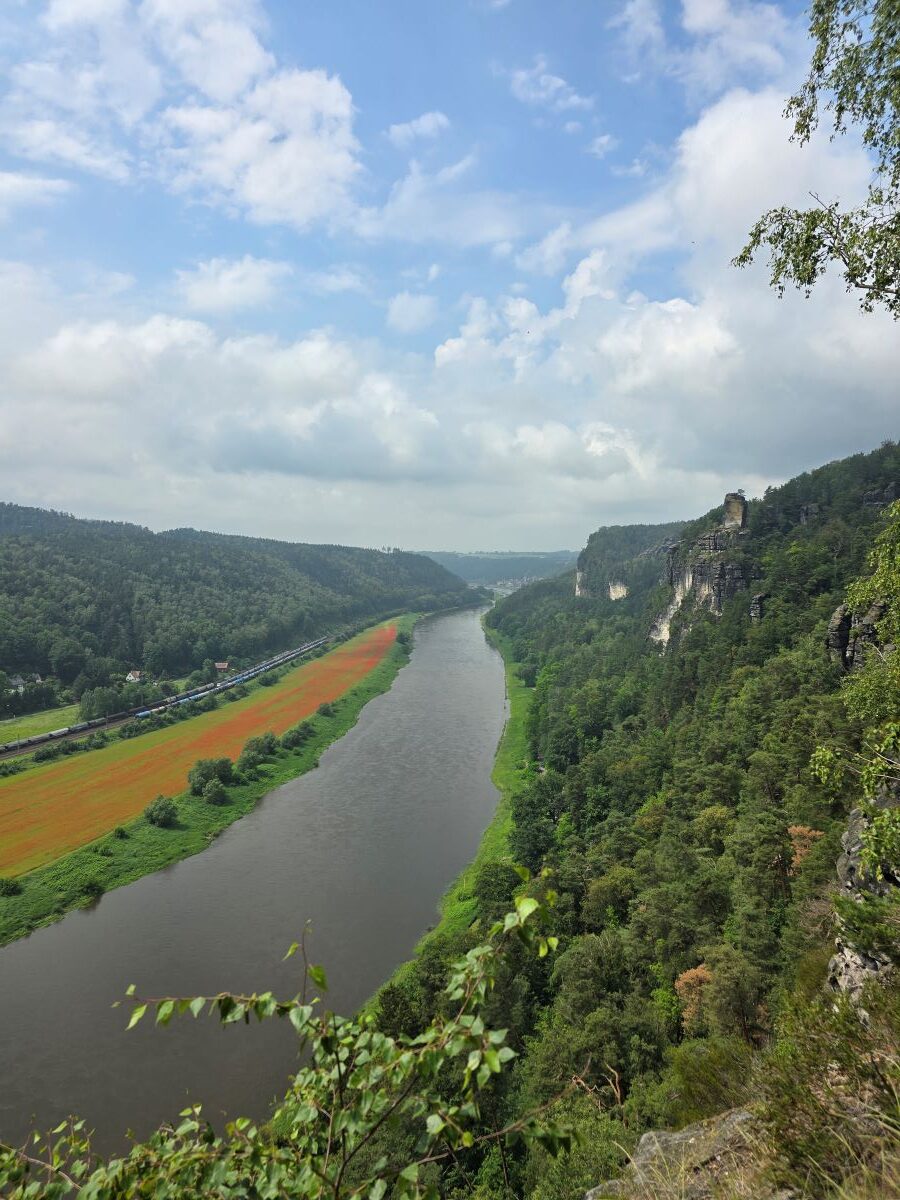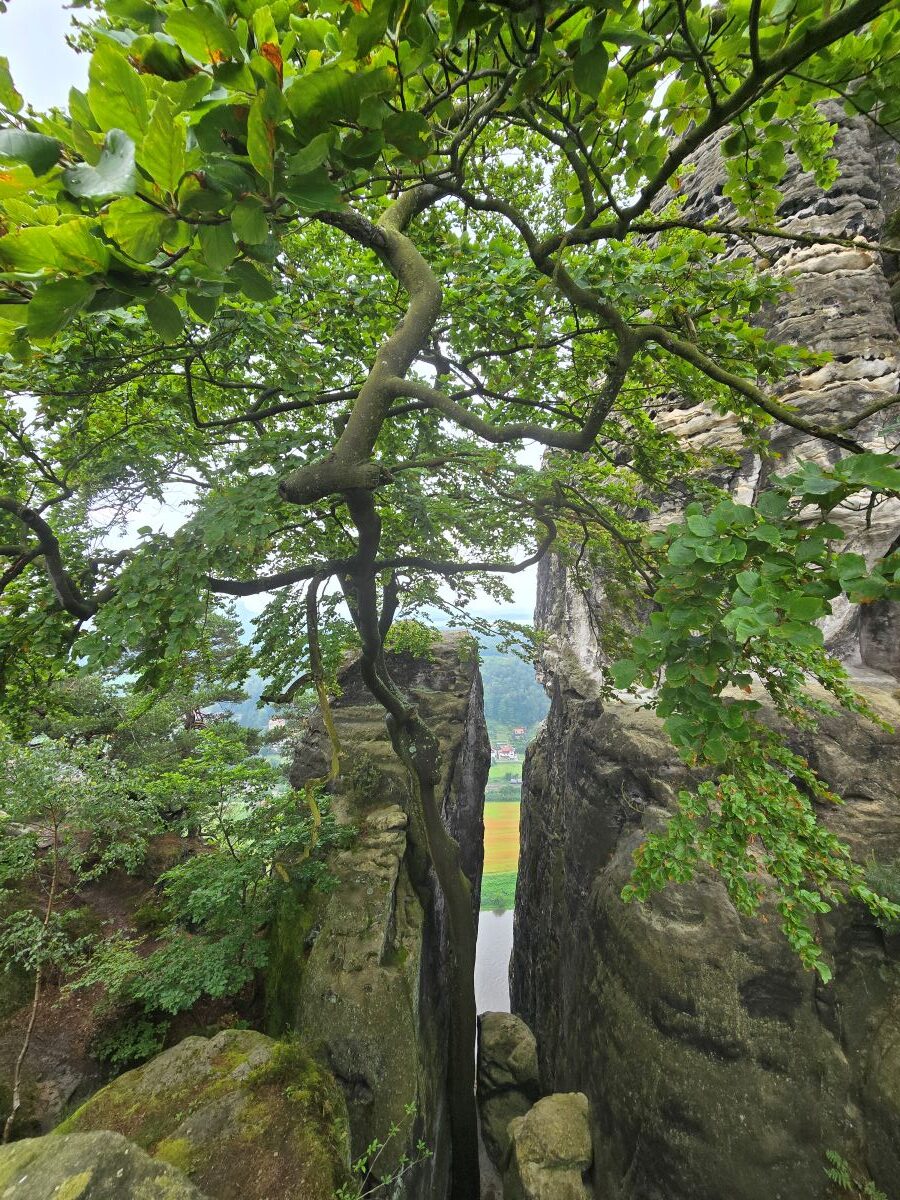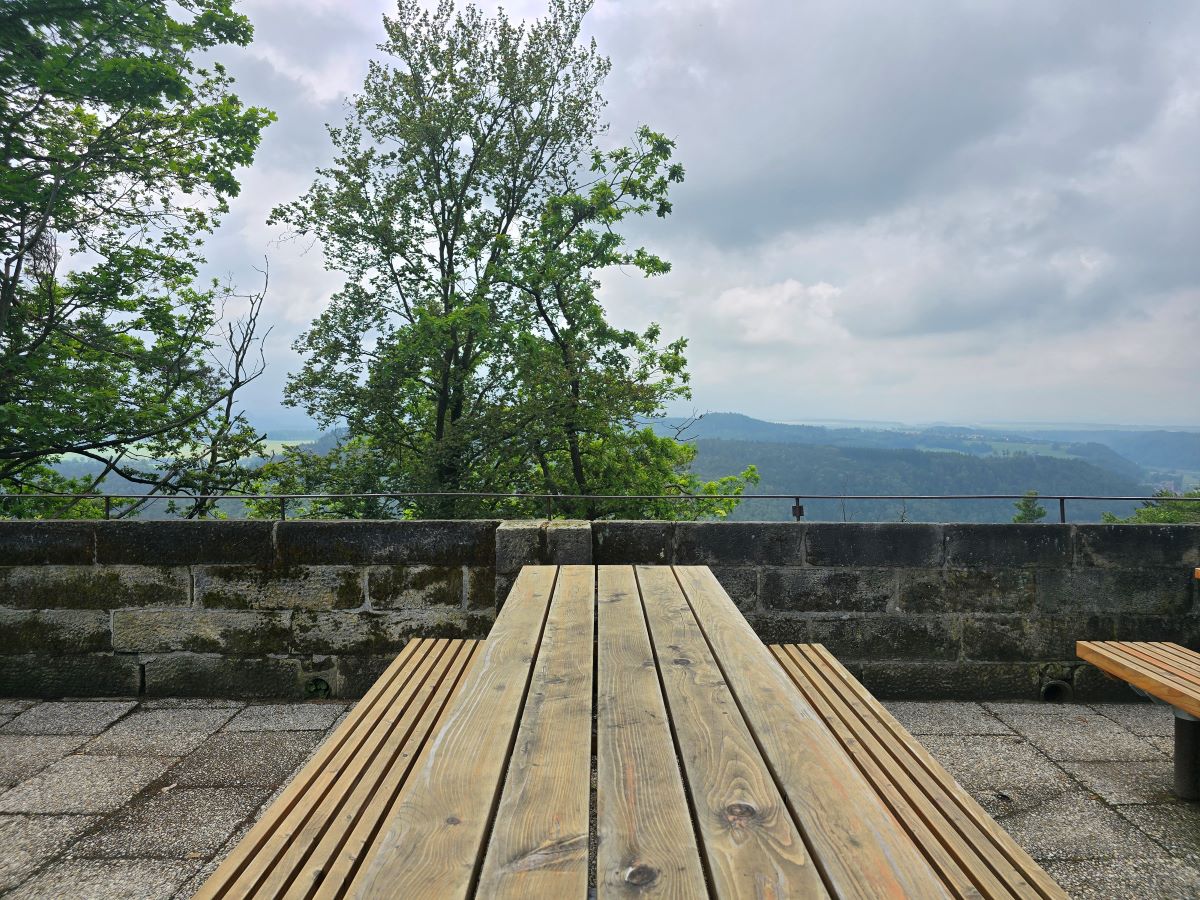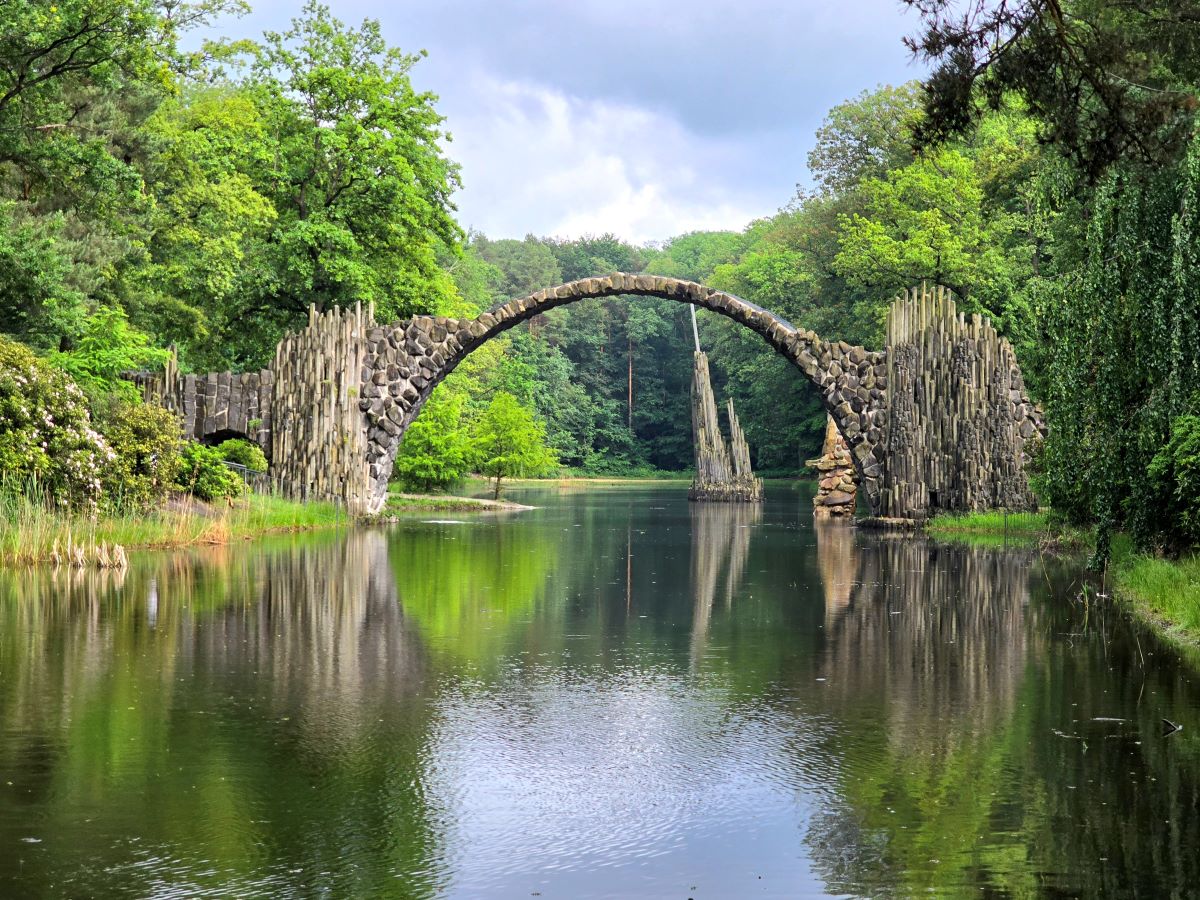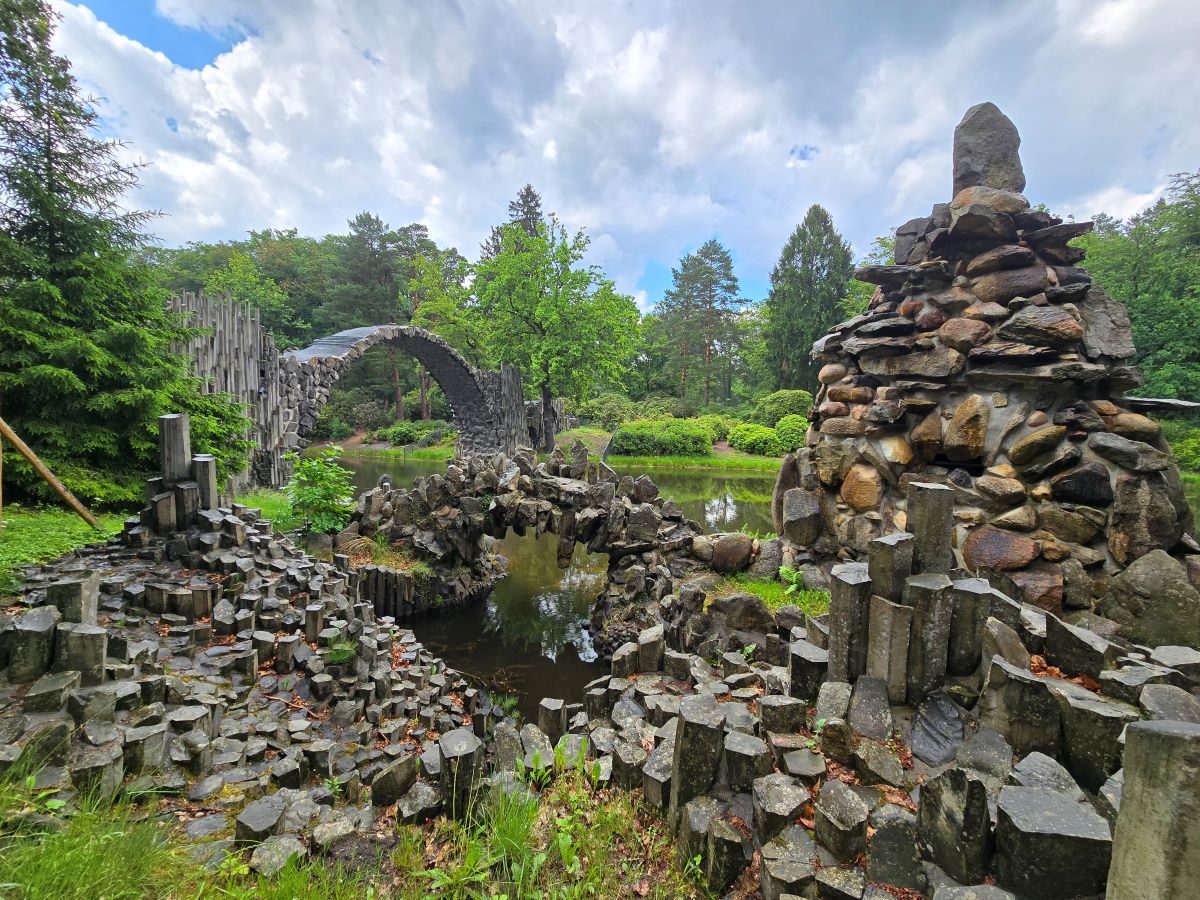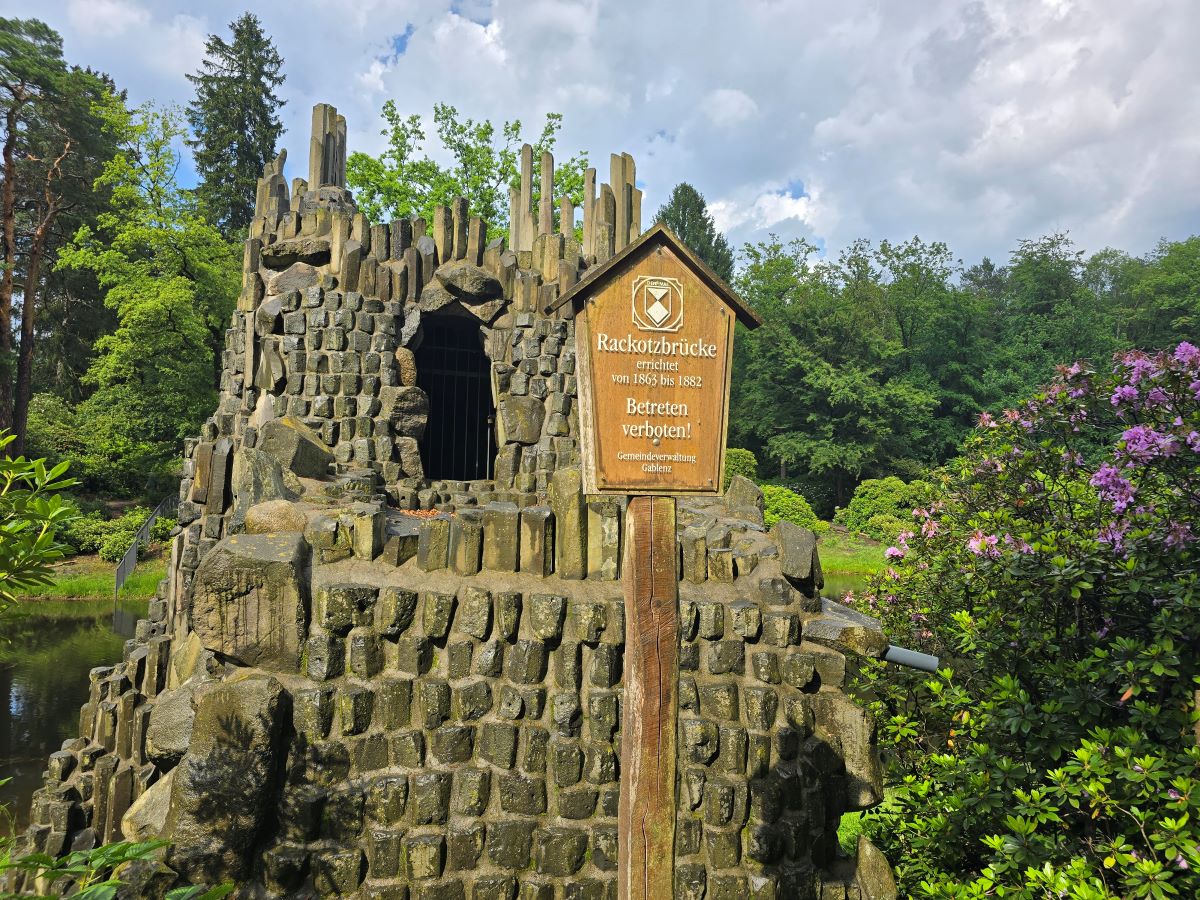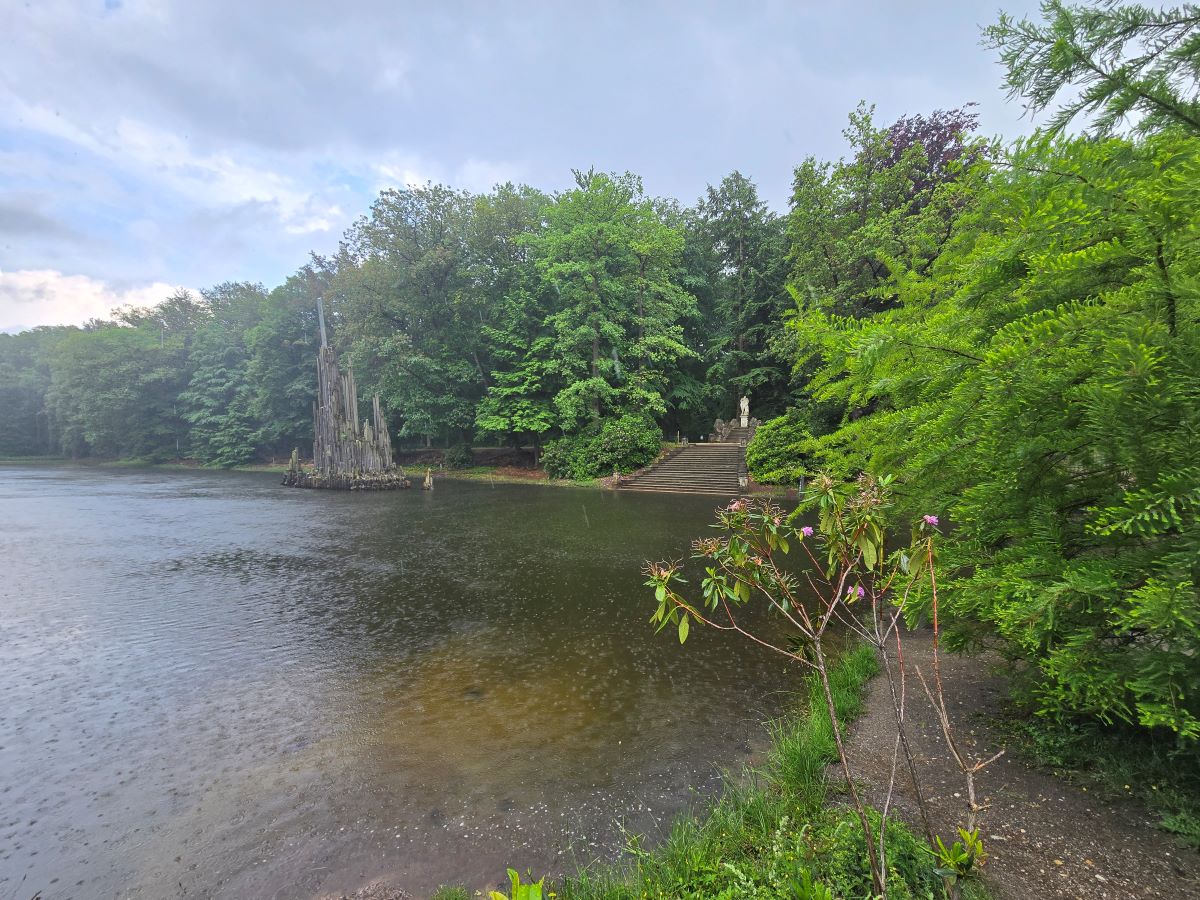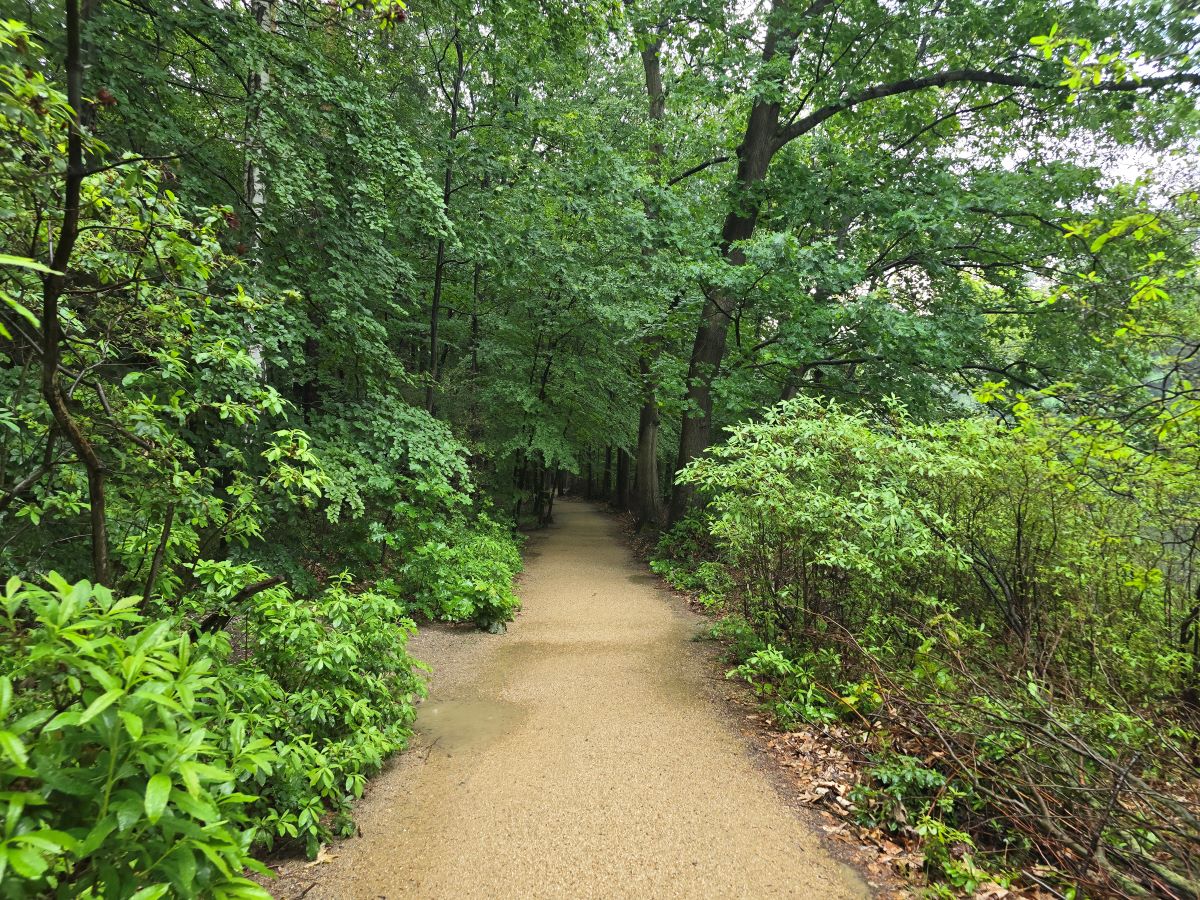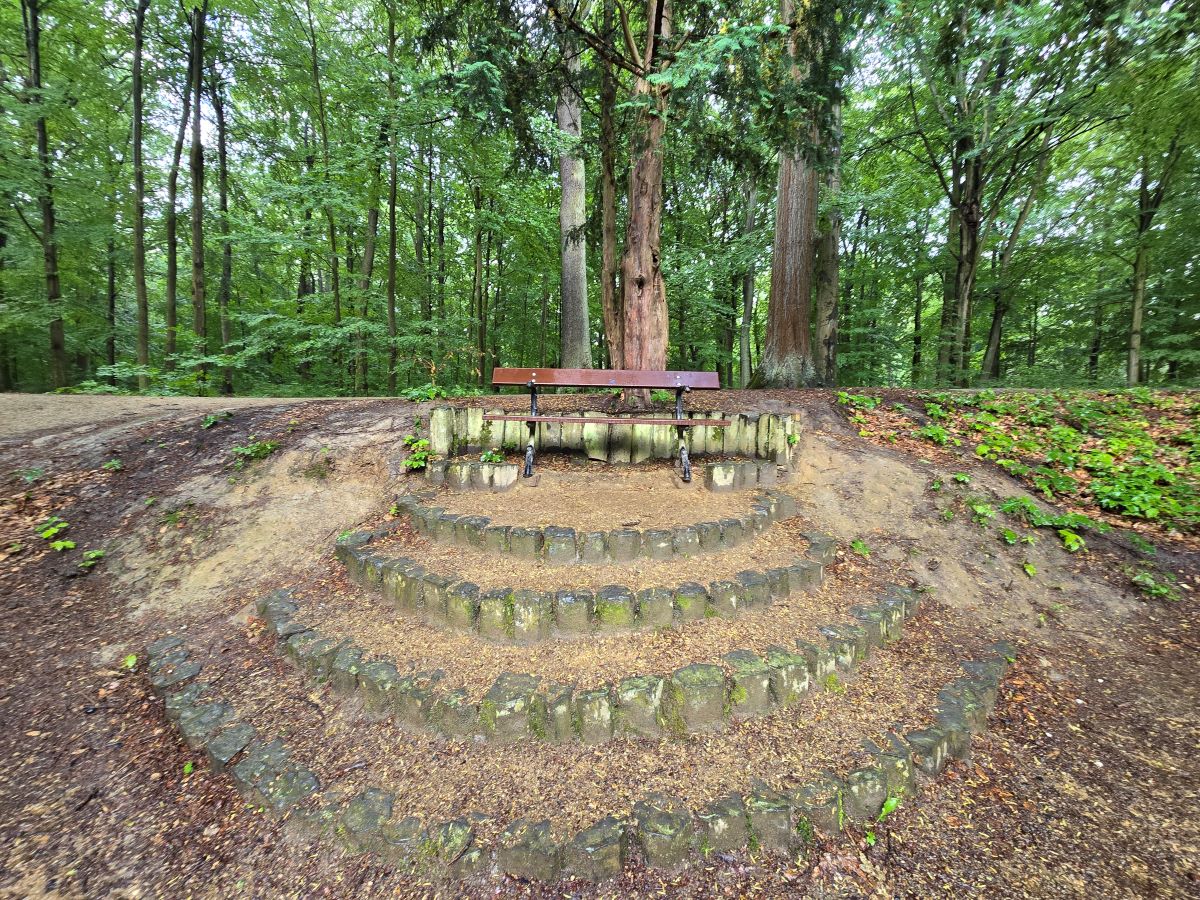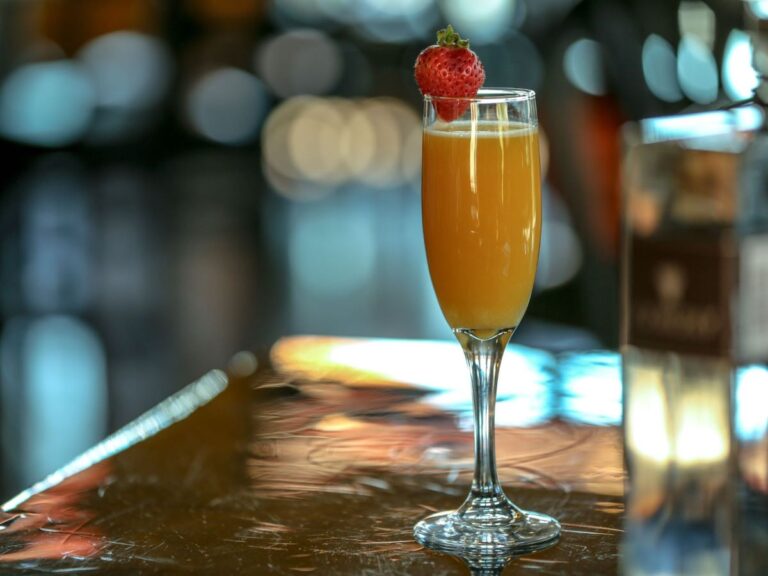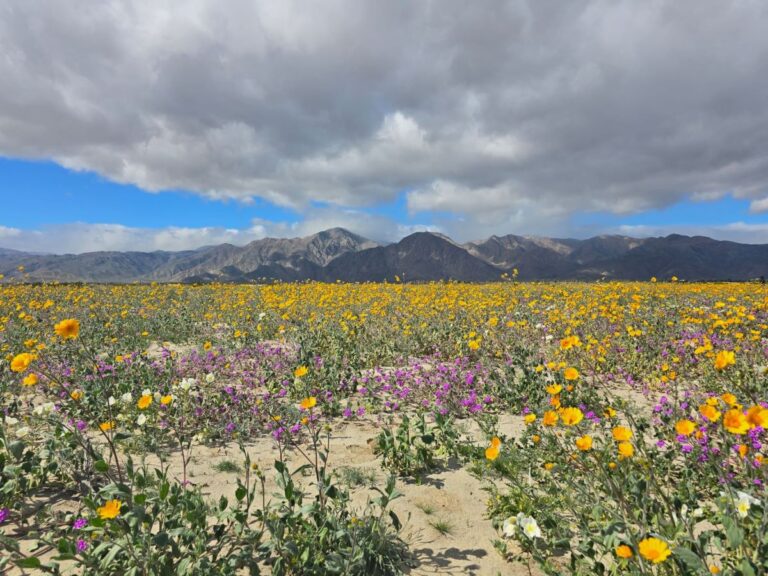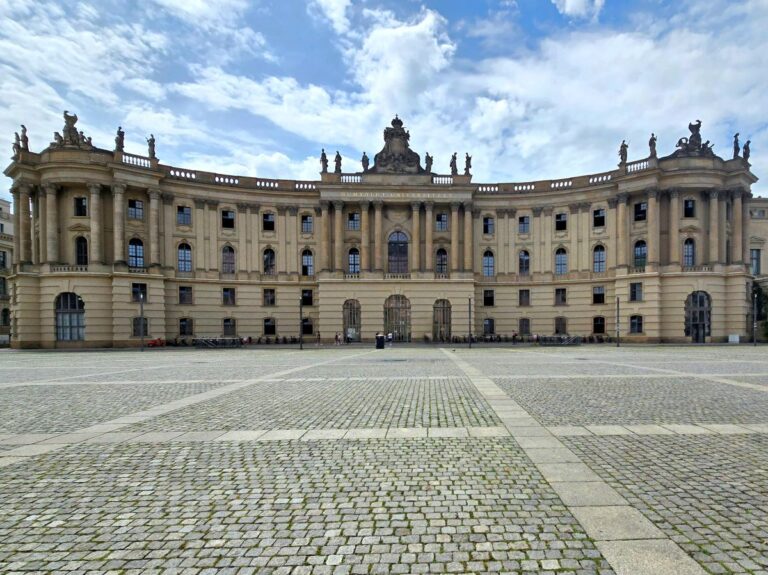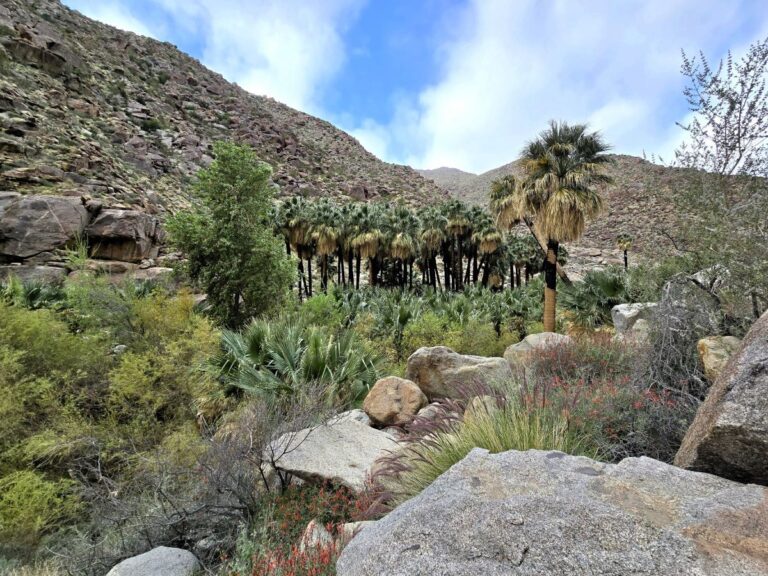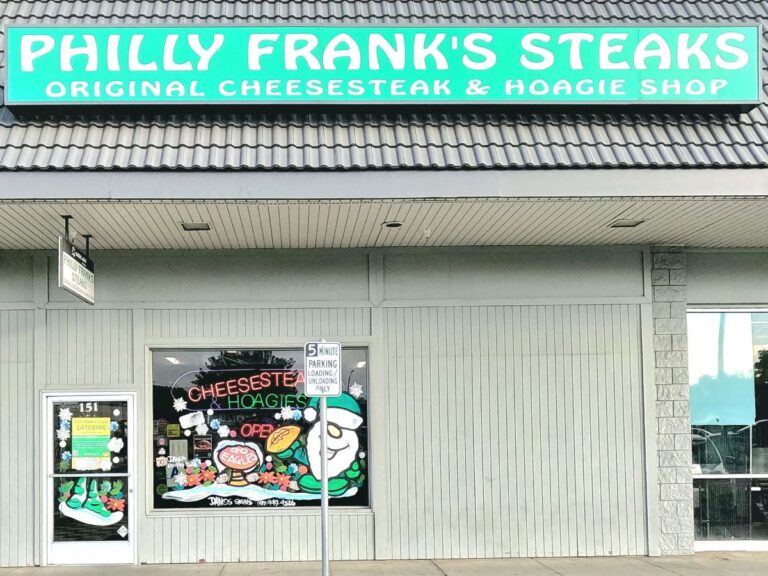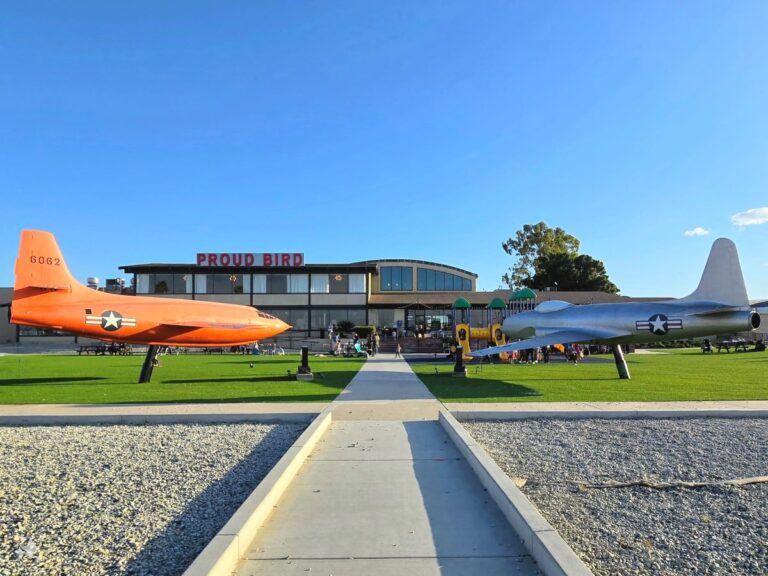Exploring Germany: 7 Amazing Day Trips from Berlin By Car

A couple of days before flying to Berlin, we decided to rent a car for our trip. I’d been looking into day trips from Berlin to places like the Bastei Bridge, and getting there by public transportation would be a pain.
My husband thinks he did me a disservice by not making me take public transportation to go anywhere there, but I’m totally happy we had a car! That said, I’m sure glad he was driving and not me! As my husband said, “Driving there is not for the faint of heart.” He did get an absolute thrill out of driving on the autobahn! It’s insane how quickly cars come up from behind when there’s no speed limit!
If you rent a car, you’re in for a scenic treat! Most of the roads on these day trips are lined with towering trees, bright green meadows, and vibrant red flowers.
Initially, we were going to only do day trips from Berlin to some of the locations below, but we ended up taking a short road trip away for two nights. Some of these cities are 2 to 3.5 hours away from Berlin, and we thought that was a little too ambitious for us, so taking a short road trip made it easier for us to see all the places. I’ll go into more detail about that below.
Map with day trips from Berlin and a road trip route
Drive times
| City | Drive Time |
|---|---|
| Potsdam | 30 minutes from Berlin |
| Oranienburg | 35 minutes from Berlin |
| Erfurt | 3.5 hours from Berlin |
| Leipzig | 2.25 hours from Berlin and 1.5 hours from Erfurt |
| Dresden | 2.25 hours from Berlin and 1.25 hours from Leipzig |
| Bastei Bridge | 2.75 hours from Berlin and 45 minutes from Dresden |
| The Devils Bridge | 2 hours from Berlin and 1.5 hours from the Bastei Bridge |
Potsdam
Location: Potsdam
Distance from Berlin: Approximately 36 Kilometers (22 miles)
Travel Time from Berlin: 30 minutes
Sanssouci Palace
I wanted to check out a palace in Germany, so we took a short trip to Potsdam to tour the Sanssouci Palace. It’s a magnificent place to see, and it’s enormous!
It was built in the 18th century as a summer retreat for Frederick the Great, King of Prussia. The palace is known for its stunning architecture, terraced vineyards, and exquisite gardens. The name “Sanssouci” is French for “without a care,” reflecting the relaxed and carefree atmosphere of the palace and its surroundings.
The Sanssouci Palace is the only attraction we visited in Postdam before heading to dinner, but I listed a few more places below that I was interested in visiting.
Cecilienhof Palace
Cecilienhof Palace, built in the early 20th century, is known for its English Tudor-style architecture and scenic surroundings.
It’s also famous for being the site of the 1945 Potsdam Conference. The leaders of the three Allied powers attended the conference—Joseph Stalin, Harry S. Truman, and Winston Churchill—who met to discuss the administration of post-World War II Germany and the establishment of peace.
Dutch Quarter
The Dutch Quarter is a unique area with red brick buildings and a Dutch architectural style. It was built in the 18th century under the reign of King Frederick William I, who wanted to attract Dutch craftsmen to settle in the area.
The quarter consists of 134 red brick buildings on four squares and has charming cafes, shops, and art galleries. It’s a great place to explore and experience a bit of Dutch culture in the heart of Potsdam.
Babelsberg Palace and Park
Babelsberg Palace and Park was built for Prince William, later Emperor William I of Germany. The palace combines Gothic, Renaissance, and Baroque styles and offers remarkable views of the Havel River and a marvelous landscape.
The palace is temporarily closed, but you can visit the park.
Where to Eat
There are lots of places to eat, and it was hard to choose a place, but we ended up at El Puerto Tapas Restaurant on the harbor, and it was one of our favorite meals on our trip.
The parking is a little tricky, and Google Maps led us astray. It told us we arrived at our destination, but there was no where to turn off and park. We had to cross the bridge just past the restaurant, and due to traffic, it would take 20 minutes to turn around and go back. We found a pricey parking garage and walked back over the bridge. If you go to El Puerto, park at Parkplatz Am Lustgarten and walk to the restaurant.
Oranienburg
Location: Oranienburg
Distance from Berlin: Approximately 41 Kilometers (26 miles)
Travel Time from Berlin: 35 minutes
Sachsenhausen Memorial and Museum
We went to Oranienburg to visit the Sachsenhausen Memorial and Museum. It was a dark and heavy tour to stomach, but it was a part of history worth seeing. The memorial serves as a place of remembrance and learning about the history of the Sachsenhausen concentration camp.
We took the audio tour, which was very informative and lengthy. There was so much information that we didn’t finish all the sections. They also offer guided tours. We spent about three hours there, but there are enough activities to spend all day there.
Oranienburg Palace
On the way to lunch, we passed by the Oranienburg Palace, and it looked like a spectacular place to visit. It’s a Baroque-style palace surrounded by lovely gardens.
Where to Eat
Grillhaus Papa Asada! The food is so good, and I loved the charming, lush green patio in the back. I also recommend walking through the inside and checking out the decor.
Erfurt
Location: Erfurt
Distance from Berlin: Approximately 302 Kilometers (188 miles)
Travel Time from Berlin: 3.5 hours
Erfurt is a fantastic place to visit, and it’s precisely what you’d expect to see when you think of visiting Germany. It’s a picturesque Old Town with its medieval layout, half-timbered houses, and narrow cobblestone streets. We only spent four hours there but could have easily stayed longer.
Town Square
While driving to Erfurt, we decided to visit the Town Square (Domplatz), surrounded by cathedrals, shops, restaurants, and bars. All of the places mentioned below are in this area, and it’s where we spent all of our time in Erfurt.
Cathedral of St. Mary
The Cathedral of St. Mary was our first stop, and it’s hard to miss. This extraordinary Gothic-style church has incredible architecture, stained glass, and art. We were lucky to see the organ playing in the main church building. It was crowded but still a sight to see.
Merchants’ Bridge
From the Cathedral of St. Mary, we wandered through the town square, shops, and houses along the cobblestone streets to the Merchants’ Bridge (Krämerbrücke Bridge).
The Merchant’s Bridge is known for being one of the longest-inhabited bridges in Europe. It’s lined with historic, half-timbered buildings housing shops, art galleries, and craft stores.
Where to Eat
This area has endless places to eat, and cute sidewalk cafes are everywhere. We had a nice lunch at the Hofbräu at the cathedral (Hofbräu am Dom).
We were also interested in checking out this biergarten next to the Cathedral of St. Mary, but we opted to eat somewhere inside since it was rainy. It looks like they were grilling sausages and other tasty foods.
For the beer lovers
I swear my husband is a beer hound! He always finds or “sniffs” out the best “hoppy” places to go. It’s one of his many talents! 🤣
We randomly walked up to the Altstadtkneipe Noah. If you love craft beer, they have a huge selection from all over. We even saw some San Diego beers on the menu. The food looked good there, but we had already eaten, so we just enjoyed our liquid calories.
Parking
My initial plan was to find free street parking, but we had no such luck. Finally, we parked on the street and paid for four hours, but it was a little further walk than expected. My husband paid using his phone, and the total for four hours was 5,75 euros.
As we went through the town square and shops, we noticed much closer parking lots. Here are some places to consider parking. Most of these are about 2 euros per hour.
Leipzig
Location: Leipzig
Distance from Berlin: Approximately 191 Kilometers (119 miles)
Travel Time from Berlin: 2.25 hours
In Leipzig, we had a chance to explore the nightlife in the historic old town square and the impressive Monument to the Battle of the Nations. If we had more time, I would’ve liked to have also checked out some of the other locations I listed below.
Monument to the Battle of the Nations
The Monument to the Battle of the Nations is an incredible place to visit. It honors the 1813 Battle of Leipzig, also known as the Battle of the Nations, a significant event during the Napoleonic Wars.
The Monument stands 91 meters (299 feet) tall, and you can climb to the top to enjoy panoramic views of the area. I made it to the first outdoor platform, which was pretty high up, but I chickened out on going up to the top. You have to climb narrow spiral stairs, and even though I’m not typically a claustrophobic person, I didn’t like being inside the stairwell. My husband said there was a line of people on the way down, so I’m glad I passed. It looked awesome, though.
St. Thomas Church
St. Thomas Church is famous for being Johann Sebastian Bach’s workplace. The church’s Gothic architecture and tower make it a popular attraction. It’s also Bach’s burial site, attracting music enthusiasts and historians.
Historic Old Town
The Old Town area of Leipzig is a charming district. Its wonderful architecture includes the Old City Hall, the St. Thomas Church, and the historic Market Square (Marktplatz).
The area is full of quaint streets, lovely squares, and a variety of shops, cafes, and restaurants. If you visit in late November through December, the Christmas Market also occurs in the historic Market Square.
Memorial Museum in the “Round Corner”
The Memorial Museum in the “Round Corner” (Museum in der Runden Ecke) used to be the district headquarters of the Ministry of State Security (Stasi), the state security service of the German Democratic Republic (GDR).
At this museum, you can learn about the history and activities of the Stasi through original artifacts, documents, and interactive exhibits, aiming to honor those affected and educate future generations about the importance of protecting freedom and human rights.
Fun times after dark in the historic Market Square
If you stay the night in Leipzig, be sure to wander through the historic Market Square (Marktplatz).
We arrived late in the evening and decided to walk around after checking into the Marriott Leipzig, which is in a perfect location close to Market Square (Marktplatz). As we approached Market Square around 10 p.m., we walked into an outdoor concert featuring DJ music and live singing.
It’s not usually our kind of music scene, but we had a blast! There were biergarten carts, and we had the BEST sausage and brat right off the grill!
Dresden
Location: Dresden
Distance from Berlin: Approximately 193 Kilometers (120 miles)
Travel Time from Berlin: 2.25 hours
So, we screwed up a little with Dresden. When we arrived, the traffic was a mess, so we decided to park at our hotel (also a nightmare) and walk around.
We tend to stay at Marriott, so we just booked the Courtyard Marriott and didn’t give much thought to its location. The hotel is nice and has a lively bar, but it’s not very walkable to any of the points of interest I mention below. We did walk to the Inner New City for dinner, but it wasn’t through the nicest parts of town.
In addition to the Inner New City, I’m providing locations we would’ve liked to have seen if the weather and traffic had been in our favor. In hindsight, we should have just called an Uber to get around.
If you stay the night, I recommend staying closer to the Old and New Market Squares or Inner New City area if you want to explore easily by foot.
Inner New City
The Inner New City (Innere Neustadt) is a vibrant neighborhood on the left side of the Elbe River. Founded in the 18th century, it features well-preserved Baroque architecture and is known for its shops, restaurants, cafes, and lively nightlife.
We walked through this area a little and had dinner at El Español.
Old Market and New Market Squares
The Old and New Market Squares are on the right side of the Elbe River. They’re about a 1.7-kilometer (1 mile) walk from Inner New City on the other side of the river.
Old Market Square (Altmarkt) is one of Dresden’s oldest and largest squares. It’s surrounded by a mix of historic and modern buildings and is a popular area for shopping, dining, and exploring the city. You can also see the Kreuzkirche church.
A very short walk from Old Market Square is New Market Square (Neumarkt). It’s home to the Frauenkirche, a famous Lutheran church destroyed during World War II and later rebuilt. The square is surrounded by Baroque architecture, shops, cafes, and cultural attractions.
Dresden Castle and Zwinger Palace
The Dresden Castle and Zwinger Palace are very short walking distances from the Old and New Market Squares, making them easy to visit if you’re exploring the right side of the Elbe River.
Zwinger Palace is a Baroque palace built in the early 18th century for extravagant court events and entertainment. The Zwinger hosts museums like the Old Masters Picture Gallery, the Porcelain Collection, and the Royal Cabinet of Mathematical and Physical Instruments.
Dresden Castle (Residenzschloss) is a historical residence of the Electors and Kings of Saxony. Today, it’s a museum complex featuring exhibitions on the city’s history and the royal family. It also houses the Green Vault, which displays a vast collection of treasures.
Pillnitz Castle
Pillnitz Castle is an enchanting palace on the outskirts of Dresden, about a 25-minute drive from the city center. The castle consists of several buildings, including the Water Palace, the Mountain Palace, and the New Palace, all surrounded by gardens along the River Elbe.
Blue Wonder Bridge
If you visit Pillnitz Castle, you’ll drive over the Blue Wonder Bridge. We crossed it on our way to the Bastei Bridge.
The Blue Wonder Bridge (Blaues Wunder) is a historic cantilever truss bridge that spans the Elbe River. It was completed in 1893 and was considered an engineering marvel back then. The bridge offers excellent views of the river and the city and is recognizable by its distinctive blue color.
Dinner at El Español
Now, back to dinner at El Español. As I mentioned above, it’s in the Inner New City. This is the perfect place to check out if you love Spanish tapas. The food is authentic, and the restaurant has traditional decor.
We arrived around 5 p.m., and it was still quiet, but it started filling up quickly by 6 p.m. It’s a small restaurant, so I recommend making reservations, especially if you have a group. Several tables had reservation signs on them.
Bastei Bridge
Location: Bastei Bridge
Distance from Berlin: Approximately 243 Kilometers (151 miles)
Travel Time from Berlin: 2.75 hours
The Bastei Bridge in the Saxon Switzerland National Park was one of my favorite things to see. It had been on my list since before we left for Germany, and it didn’t disappoint.
The bridge spans the Bastei rock formation, offering breathtaking views of the Elbe River and the surrounding sandstone cliffs. Some ruins of Neurathen Castle, which once stood on the Bastei rocks, are also nearby.
We spent a couple of hours exploring the paved paths and lookouts. If we had more time, I would’ve liked to have hiked one of the nearby trails.
After you’ve worked up an appetite, you should stop by the Panorama Biergarten. We enjoyed beer and brats (the brats were meh) and soaked up the phenomenal views.
The Devil’s Bridge
Location: The Devils Bridge
Distance from Berlin: Approximately 165 Kilometers (103 miles)
Travel Time from Berlin: 2 hours
We made a short stop at the Devil’s Bridge (Rakotzbrücke) on our way back to Berlin from the Bastei Bridge. I was really hoping it’d be worth it because we drove through intense rain and hail storms to get there. Well, it was!
This place is unreal! You feel like you entered a mystical fairytale. We’d seen pictures of it, but in person, holy moly, it’s a sight to see. It was raining while we were there, but we still loved every minute.
The Devil’s Bridge is a stone arch built in the 19th century in Kromlauer Park. This unique architectural masterpiece is well-known for its perfect circular reflection in the water, which creates the illusion of a full circle.
In Europe, there are several Devil’s Bridges and a handful of tales about how they were built. While the stories vary, they typically involve the bridge being constructed with the help of the devil, who demands the soul of the first to cross it. However, the builder outsmarts the devil by sending an animal across first. Thus, the devil vanishes in anger.
The legend around Rakotzbrücke takes a different turn. Rather than tricking the devil, the builder sacrifices his own life by walking across the bridge.
Instead of day trips, take a short road trip
Instead of day trips from Berlin, we took a short 3-day road trip, which worked out well. We spent two nights away, but if we did it again, I would consider doing three nights for the loop we traveled. Click here to see the map with the route.
Day 1 – Berlin to Erfurt and then Leipzig
On the first day of our road trip, we drove from Berlin to Erfurt (3.5 hours) and explored for about four hours before heading to Leipzig (1.5 hours) to spend the night. We enjoyed our stay at the Marriot Leipzig, which was a very short walk to the historic Market Square.
Day 2 – Leipzig to Dresden
Since we arrived late in Leipzig the night before, we woke up and explored for half a day before heading to Dresden (1.25 hours).
Once we arrived in Dresden in the early afternoon, we checked into the Courtyard Marriott, walked around, and went to dinner.
Day 3 – Dresden to the Bastei Bridge, The Devil’s Bridge, and back to Berlin
On the last day of our road trip, we drove to the Bastei Bridge (45 minutes) and walked around for a couple of hours. From there, we went to the Devil’s Bridge (1.5 hours) for about 45 minutes before returning to Berlin.
Option to extend the road trip
We were happy with our road trip and saw a lot, but the schedule was a little tight. If you have more time, you might want to spend three or four nights away from Berlin.
- Day 1: Drive to Erfurt (3.5 hours), explore, and spend the night
- Day 2: Head to Leipzig (1.5 hours), check out the attractions, and stay the night
- Day 3: Go to Dresden (1.25 hours), see the sites, and check into your hotel
- Day 4: Drive to the Bastei Bridge(45 hours), The Devil’s Bridge (1.5 hours), and back to Berlin.
To take it a step further, you could add a 5th day by staying the night near the Bastei Bridge and then stopping at The Devil’s Bridge on the way back to Berlin. There’s a hotel at the Bastei Bridge and some more along the Elbe River, like the Steiger Hotel Rathener Hof.
Related posts to help you plan a trip to Germany
- 9-Day Berlin Itinerary with Road Trips (Easy to Customize)
- Berlin City Walk Tour: The Best Way to Explore Berlin in One Day
- Bastei Bridge: How to Visit This Stunning Attraction in Germany
- How to Visit The Devil’s Bridge: A Fairytale Adventure in Germany
- Monument to the Battle of the Nations: A Must-Visit in Leipzig
- How to Visit the Sanssouci Palace in Potsdam, Germany
- JW Marriott Hotel Berlin: A Luxury Hotel at an Affordable Price
